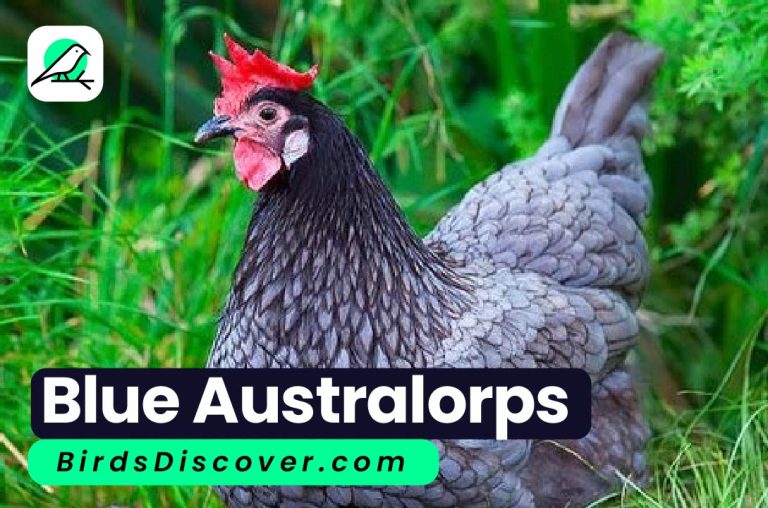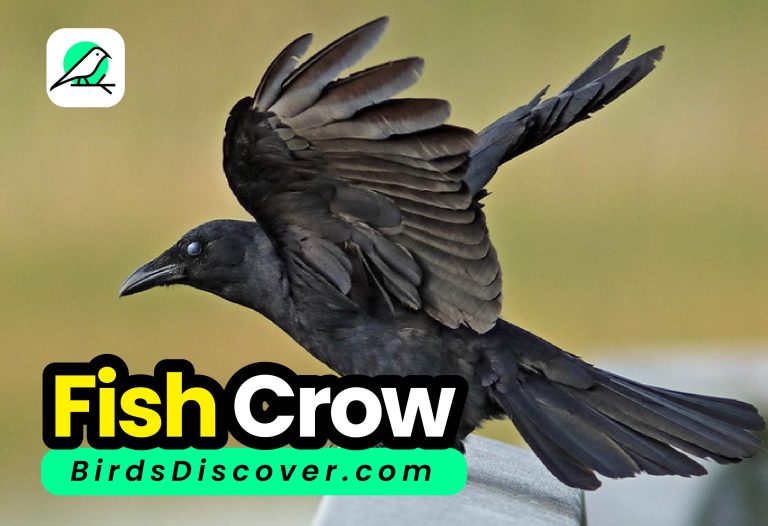46 Enchanting Purple Birds: Overview And Identification
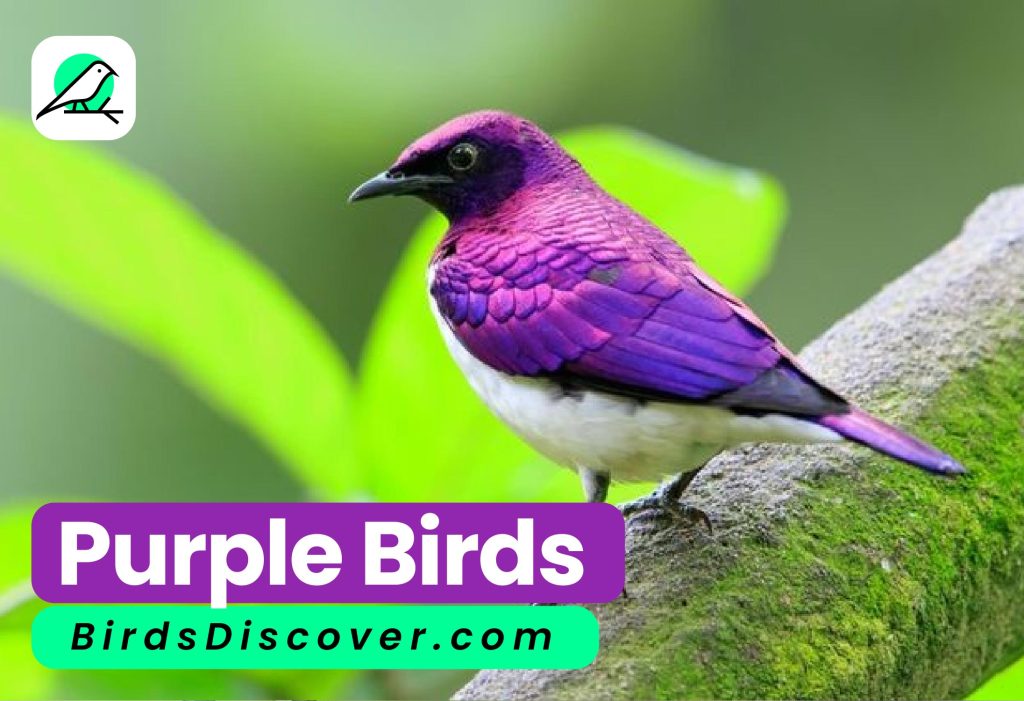
48 Enchanting Purple Birds: Overview And Identification
Purple Birds
The world of birds is incredibly diverse, filled with species that exhibit a wide range of colors, patterns, and behaviors. Among these avian wonders, purple birds stand out as particularly striking and enigmatic. Their distinctive coloration, which ranges from soft lavenders to deep, vivid purples, captivates birdwatchers, researchers, and nature enthusiasts alike. This article delves into the fascinating realm of purple birds, exploring their biology, behavior, ecological significance, and conservation status.
Biology and Appearance
Purple birds are not confined to a single species but rather represent a category of birds with varying shades of purple in their plumage. This color can appear in different parts of their bodies, such as feathers, throat patches, or wings. The coloration of these birds is a result of specific pigments and structural coloration in their feathers. In many cases, the purple hues come from a combination of pigments called psittacofulvins, which are found in the feathers of some parrots, and the structural arrangement of feathers that can create iridescence.
One of the most notable purple birds is the Purple Martin (Progne subis), a species of swallow known for its vibrant, deep purple feathers. Native to North America, male Purple Martins are distinguished by their dark, metallic purple plumage, which becomes especially striking in the sunlight. Another example is the Violet-crowned Hummingbird (Amazilia violiceps), native to southwestern United States and Mexico, which features a stunning violet crown and throat that contrast with its otherwise green body.
Behavior and Ecology
Purple birds exhibit a range of behaviors and ecological roles that contribute to their environment. Many purple bird species are migratory, traveling vast distances between breeding and wintering grounds. For instance, the Purple Martin migrates between North America and Brazil, covering thousands of miles during its migration. During the breeding season, these birds are known for their impressive aerial displays and complex vocalizations that are used to attract mates and defend territories.
In terms of feeding, purple birds often have specialized diets. The Purple Martin, for example, primarily feeds on insects, catching them in mid-flight with incredible agility. Their feeding habits play a crucial role in controlling insect populations, thus impacting the health of their ecosystems. Similarly, the Violet-crowned Hummingbird feeds on nectar from various flowering plants, aiding in pollination and contributing to the health of the flora in its habitat.
Habitat and Distribution
The habitat preferences of purple birds vary widely depending on the species. The Purple Martin prefers open woodlands and urban areas, where it can find suitable nesting sites in man-made structures such as birdhouses. On the other hand, the Violet-crowned Hummingbird is often found in arid and semi-arid regions, including desert scrub and oak woodlands. These diverse habitat preferences reflect the adaptability of purple birds to different environmental conditions.
Despite their adaptability, purple birds are not immune to habitat loss and environmental changes. Urbanization, deforestation, and climate change can all impact their habitats, leading to shifts in their distribution and availability of resources. For example, changes in flowering patterns due to climate change can affect the availability of nectar for hummingbirds, while the loss of suitable nesting sites can impact species like the Purple Martin.
Conservation Status
The conservation status of purple birds varies depending on the species. While some, like the Purple Martin, have adapted well to human-altered environments and are relatively stable in their populations, others face more significant challenges. Habitat loss, climate change, and other human-induced pressures can threaten their survival.
Conservation efforts for purple birds often involve habitat protection and restoration. For example, creating and maintaining nest boxes for Purple Martins has been a successful strategy to support their populations. These artificial nests provide safe and suitable breeding sites, helping to mitigate the effects of habitat loss. Additionally, protecting and restoring native plant species is crucial for supporting hummingbirds and other nectar-feeding birds.
Public awareness and education are also key components of conservation efforts. By increasing knowledge about purple birds and their ecological roles, individuals can become more engaged in protecting their habitats and supporting conservation initiatives. Birdwatching groups, wildlife organizations, and conservationists play an essential role in advocating for and implementing these efforts.
Cultural and Symbolic Significance
Purple birds have also captured the imagination of people across cultures and histories. Their striking colors often symbolize beauty, rarity, and mystery. In various cultures, purple is associated with royalty and spirituality, and purple birds can be seen as symbols of elegance and grace. The vivid plumage of these birds often makes them popular subjects in art and literature, where they are celebrated for their beauty and unique characteristics.
For many bird enthusiasts, encountering a purple bird is a memorable experience that highlights the diversity and wonder of the avian world. The allure of these birds continues to inspire curiosity and admiration, driving efforts to study and protect them.
Purple Starling
The Purple Starling, scientifically known as Lamprotornis purpureus, is a strikingly beautiful bird native to eastern and southern Africa. Renowned for its iridescent plumage, the male Purple Starling boasts a vivid combination of deep purples and blues that shimmer in the sunlight, creating a captivating display of color. This stunning appearance is complemented by its contrasting white belly and bright yellow eye, making it a standout in its natural habitat. The Purple Starling is typically found in open woodlands, savannas, and along forest edges, where it forages for insects, fruits, and seeds. Its sociable nature often sees it in small to medium-sized flocks, and it plays an important role in seed dispersal. The species is also known for its melodious calls and complex songs, which contribute to its charm and social interactions.
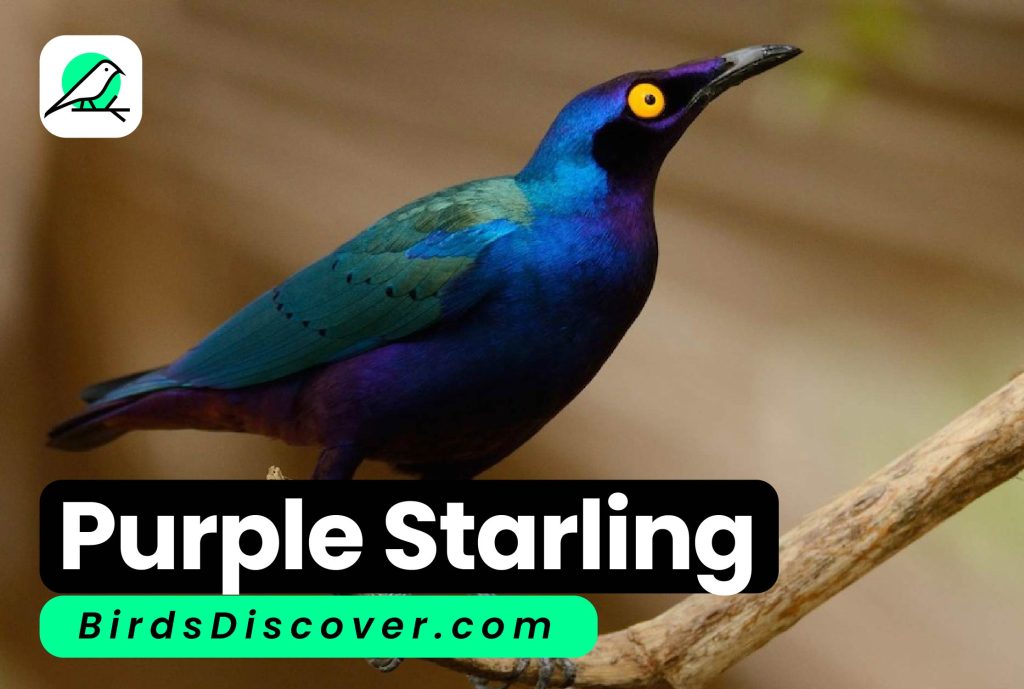
Purple Starling Biography, Sound
| Category | Details |
|---|---|
| Common Name | Purple Starling |
| Scientific Name | Lamprotornis purpureus |
| Family | Sturnidae |
| Distribution | Eastern and Southern Africa |
| Habitat | Open woodlands, savannas, and forest edges |
| Physical Description | Males: Iridescent purple and blue plumage, white belly, yellow eye; Females: Duller plumage, less iridescent |
| Size | Approximately 25 cm (10 in) in length |
| Diet | Insects, fruits, seeds |
| Behavior | Sociable, often found in small to medium-sized flocks; melodious calls and complex songs |
| Breeding | Breeds in tree cavities or nests; typically lays 2-4 eggs |
| Conservation Status | Least Concern (IUCN) |
| Interesting Fact | The male’s iridescent feathers can appear almost metallic, creating a dazzling visual effect in sunlight |
Purple Honeycreeper
The Purple Honeycreeper (Cyanerpes caeruleus) is a vividly colored bird native to Central and South America, particularly found in the tropical rainforests of countries like Costa Rica, Panama, and Colombia. Recognizable by its striking plumage, the male Purple Honeycreeper boasts a brilliant purple-blue body with contrasting black wings and tail, while females and juveniles are less colorful, featuring a more subdued greenish-yellow and olive mix. This small passerine is a member of the Thraupidae family, commonly known as tanagers. Its diet primarily consists of nectar from flowers, although it also consumes small insects and fruits. The Purple Honeycreeper is known for its agile, acrobatic feeding behavior, often seen hanging upside down to reach flowers. Breeding occurs during the rainy season, with both sexes participating in building a cup-shaped nest. The species is generally stable, though it relies on the health of its rainforest habitat to thrive.
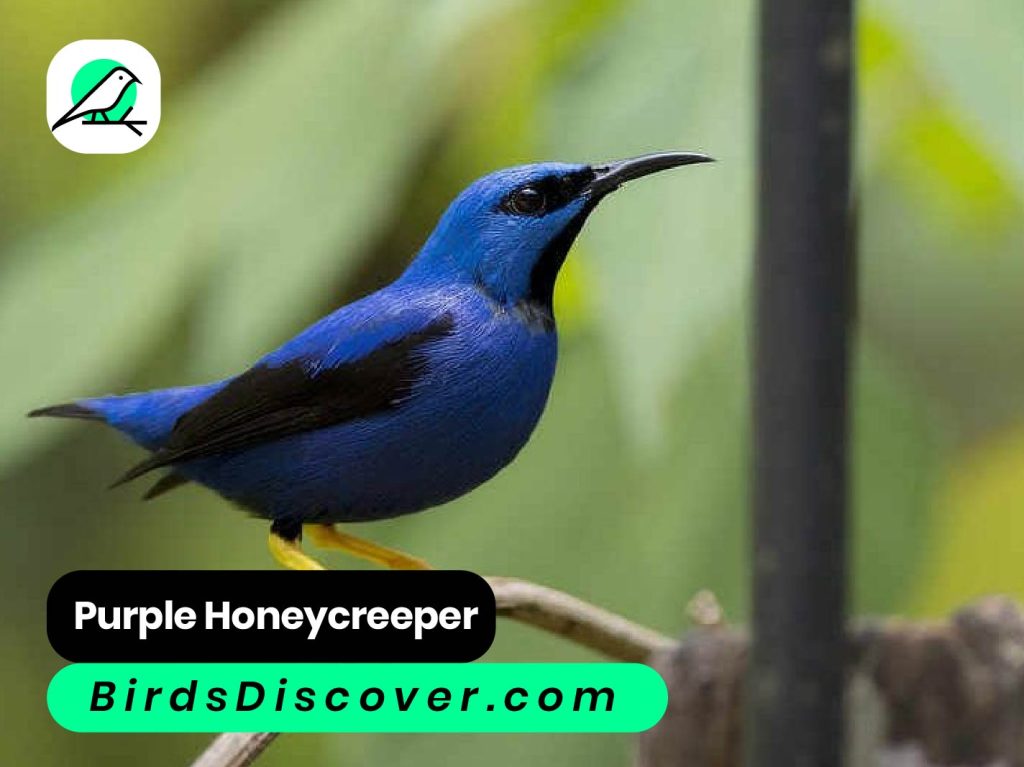
Purple Honeycreeper Biography
| Aspect | Details |
|---|---|
| Common Name | Purple Honeycreeper |
| Scientific Name | Cyanerpes caeruleus |
| Family | Thraupidae (Tanagers) |
| Order | Passeriformes (Perching birds) |
| Size | Approximately 11-12 cm (4.3-4.7 inches) in length |
| Weight | Around 10-14 grams |
| Sexual Dimorphism | Males and females have different plumage colors; males are vibrant purple, females are greenish-yellow or olive with a more subdued appearance |
| Distribution | Found primarily in the tropical forests of Central America, including countries like Costa Rica, Panama, and parts of Colombia and Venezuela |
| Habitat | Prefers lowland and montane forests, particularly in areas with abundant vegetation and flowering plants |
| Diet | Primarily feeds on nectar from flowers, but also consumes insects and fruits |
| Behavior | Often seen foraging in pairs or small groups; known for its acrobatic feeding techniques while hanging upside down |
| Breeding | Nesting usually takes place in dense vegetation; female builds the nest and incubates the eggs while the male helps defend the territory |
| Vocalizations | Produces a range of musical, high-pitched calls and songs used in communication and mating displays |
| Conservation Status | Not currently listed as endangered; considered to be of Least Concern by the IUCN due to its relatively stable population and wide range |
| Interesting Fact | The vibrant purple plumage of the male is a result of structural coloration rather than pigment, reflecting light in a way that produces a dazzling appearance |
Purple Martin
The Purple Martin (Progne subis) is a strikingly beautiful bird known for its vibrant, iridescent plumage, predominantly a deep purple-blue in males. As North America’s largest swallow, it measures about 7.5 to 8.5 inches in length and is celebrated for its aerial prowess and graceful flight patterns. Purple Martins are highly social creatures, often found nesting in colonies and favoring man-made nest boxes over natural sites. They migrate annually from their breeding grounds in North America to wintering habitats in South America. During the breeding season, which spans from late spring to early summer, they primarily feed on a diet of insects, including flies, beetles, and moths. While the species is currently classified as “Least Concern” due to its widespread presence, habitat loss and competition with other bird species can impact local populations. Their lively social behavior and striking appearance make them a favorite among birdwatchers.
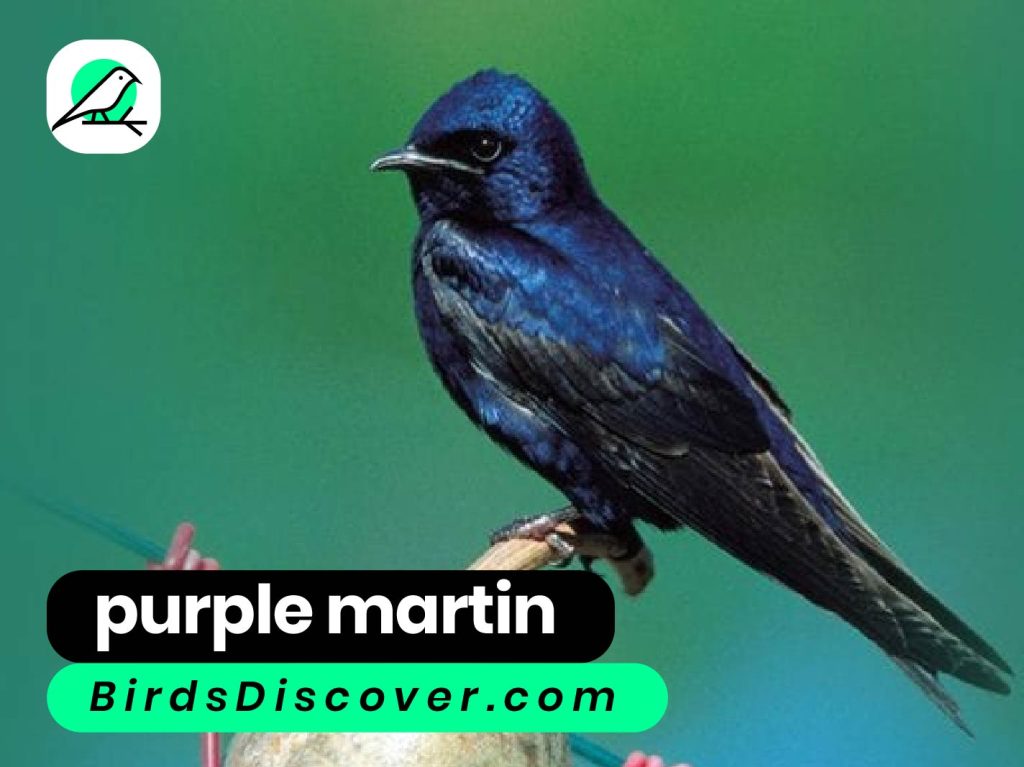
Purple Martin Biography, Sound
| Category | Details |
|---|---|
| Common Name | Purple Martin |
| Scientific Name | Progne subis |
| Family | Hirundidae (Swallow family) |
| Appearance | Males: Iridescent purple-blue feathers; Females: Brownish with some purple iridescence |
| Size | 7.5 – 8.5 inches (19 – 22 cm) in length |
| Weight | 1.5 – 2.2 ounces (42 – 62 grams) |
| Habitat | North America; migrates to South America for winter |
| Diet | Primarily insects, including flies, beetles, and moths |
| Nesting | Prefers man-made nest boxes; often nests in colonies |
| Behavior | Highly social; known for aerial acrobatics and vocal calls |
| Breeding Season | Late spring to early summer |
| Migration | Migrates from North America to South America |
| Conservation Status | Least Concern (but can be affected by habitat loss and competition) |
Violet Sabrewing
The Violet Sabrewing (Campylopterus hemileucurus) is a strikingly beautiful hummingbird native to Central America, particularly found in countries like Costa Rica and Panama. Notable for its dazzling plumage, the male Violet Sabrewing boasts a vivid iridescent violet-blue throat and chest, contrasted by a deep green back and tail, while the female displays a more subdued coloration. Measuring about 4.5 to 5 inches in length, this hummingbird is known for its remarkable iridescence and long, slender bill, which it uses to feed on nectar from a variety of flowering plants. Preferring highland forests and mountain edges, the Violet Sabrewing is often seen hovering near its favorite flowers or perching on branches. Its captivating colors and energetic flight make it a favorite among birdwatchers and nature enthusiasts. Conservation status is generally stable, though habitat preservation remains crucial for its continued well-being.

Violet Sabrewing Biography, Sound
| Category | Details |
|---|---|
| Common Name | Violet Sabrewing |
| Scientific Name | Campylopterus hemileucurus |
| Family | Trochilidae (Hummingbird family) |
| Appearance | Males: Iridescent violet-blue throat and chest with deep green back and tail; Females: More subdued coloration |
| Size | 4.5 – 5 inches (11.5 – 13 cm) in length |
| Weight | Approximately 0.2 – 0.3 ounces (5 – 8 grams) |
| Habitat | Highland forests, mountain edges in Central America (Costa Rica, Panama) |
| Diet | Nectar from a variety of flowering plants; occasionally insects |
| Nesting | Builds small cup-shaped nests in trees or shrubs |
| Behavior | Known for its energetic flight and hovering abilities; often seen feeding from flowers |
| Breeding Season | Typically during the rainy season, but varies by location |
| Conservation Status | Least Concern (though habitat preservation is important) |
Costa’s Hummingbird
Costa’s Hummingbird (Calypte costae) is a small, vibrant hummingbird native to the southwestern United States and northwestern Mexico. Renowned for its striking appearance, the male Costa’s Hummingbird features a vivid purple or magenta throat and crown, contrasted with green and gray body plumage. Measuring about 3.5 to 4 inches in length, it is known for its rapid wing beats and iridescent colors. This species primarily inhabits arid and semi-arid environments, including desert scrub and chaparral. Costa’s Hummingbird is a highly aggressive feeder, often defending its nectar sources from other birds. It feeds on nectar from a variety of flowering plants and occasionally consumes small insects for protein. The bird’s breeding season typically spans from late winter to early summer, during which it builds a small cup-shaped nest in shrubs or trees. Conservation status is currently stable, but habitat preservation is essential for maintaining healthy populations.
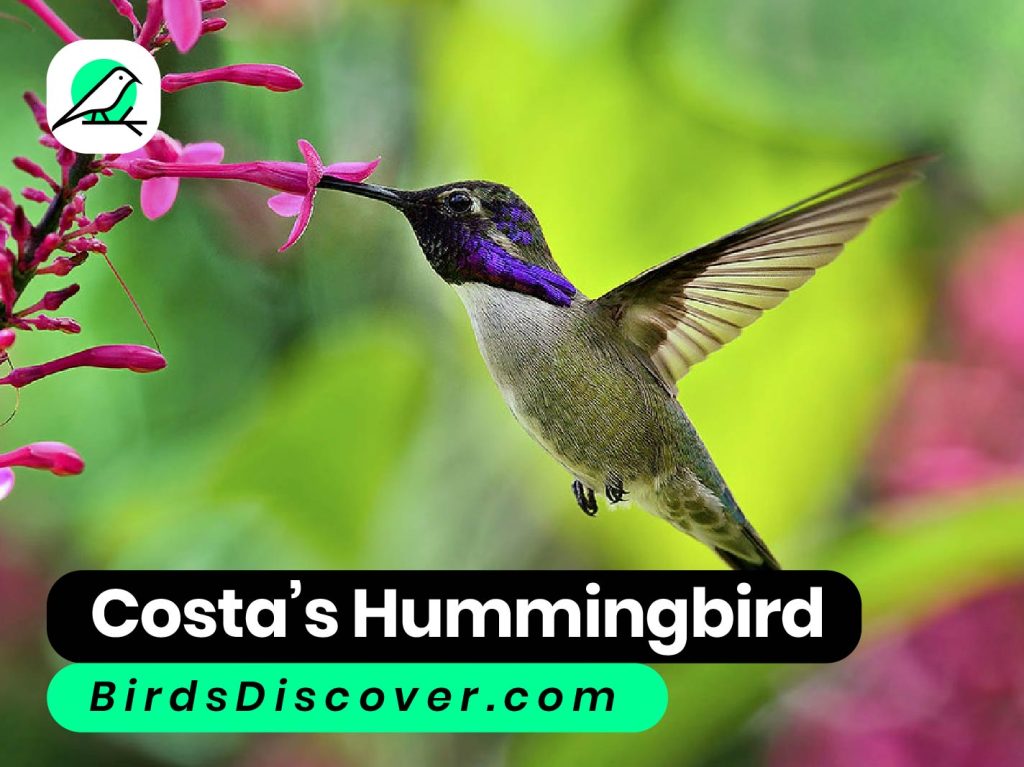
Costa’s Hummingbird Biography, Sound
| Category | Details |
|---|---|
| Common Name | Costa’s Hummingbird |
| Scientific Name | Calypte costae |
| Family | Trochilidae (Hummingbird family) |
| Appearance | Males: Vivid purple or magenta throat and crown with green and gray body plumage; Females: Generally more subdued, with green and gray feathers |
| Size | 3.5 – 4 inches (8.9 – 10 cm) in length |
| Weight | Approximately 0.1 – 0.2 ounces (3 – 5 grams) |
| Habitat | Arid and semi-arid environments, including desert scrub and chaparral in the southwestern U.S. and northwestern Mexico |
| Diet | Nectar from flowering plants; occasionally small insects for protein |
| Nesting | Builds small cup-shaped nests in shrubs or small trees |
| Behavior | Aggressive feeder, often defending nectar sources from other birds |
| Breeding Season | Late winter to early summer |
| Conservation Status | Least Concern (but habitat preservation is important) |
Violet- Backed Starling
The Violet-Backed Starling (Cinnyricinclus leucogaster), also known as the Violet-backed Starling, is a strikingly beautiful bird found across Eastern and Southern Africa. Renowned for its iridescent plumage, the male displays a vibrant violet back and wings contrasted by a white belly and chest, which makes it a standout among its avian peers. Females are less conspicuous, featuring a more muted brownish-gray coloration. This medium-sized starling measures about 7 to 8 inches (18 to 20 cm) in length and is known for its lively and social behavior. It typically inhabits open woodlands, savannas, and forest edges, where it feeds on a diet of fruits, insects, and small invertebrates. The Violet-Backed Starling often forms flocks and can be seen foraging in trees or perched prominently. Its vibrant colors and dynamic social interactions make it a favorite among birdwatchers, although it faces some habitat pressures due to deforestation.

Violet- Backed Starling Biography, Sound
| Category | Details |
|---|---|
| Common Name | Violet-Backed Starling |
| Scientific Name | Cinnyricinclus leucogaster |
| Family | Sturnidae (Starling family) |
| Appearance | Males: Iridescent violet back and wings with a white belly and chest; Females: Brownish-gray plumage |
| Size | 7 – 8 inches (18 – 20 cm) in length |
| Weight | Approximately 2 – 3 ounces (60 – 85 grams) |
| Habitat | Open woodlands, savannas, and forest edges in Eastern and Southern Africa |
| Diet | Fruits, insects, and small invertebrates |
| Nesting | Typically nests in trees or bushes |
| Behavior | Social and often forms flocks; can be seen foraging in trees or perched prominently |
| Breeding Season | Varies by region, typically coinciding with the rainy season |
| Conservation Status | Least Concern (but faces habitat pressures due to deforestation) |
American Purple Gallinule
The American Purple Gallinule (Porphyrio martinicus), also known as the Purple Swamphen, is a strikingly colorful bird native to the southeastern United States, particularly in wetland areas. Characterized by its vibrant plumage, the American Purple Gallinule boasts a rich purple body, a bright blue-green back, and a distinctive red bill with a yellow tip. This medium-sized rail measures about 12 to 16 inches (30 to 40 cm) in length and is notable for its long, slender legs and large, bright yellow feet, which it uses adeptly to navigate dense marsh vegetation. Preferring swamps, marshes, and wet meadows, it feeds on a varied diet of aquatic plants, insects, and small invertebrates. The bird is known for its elaborate courtship displays and distinctive, melodious calls. Although generally classified as of Least Concern, habitat loss and environmental changes can impact local populations, making conservation efforts important.
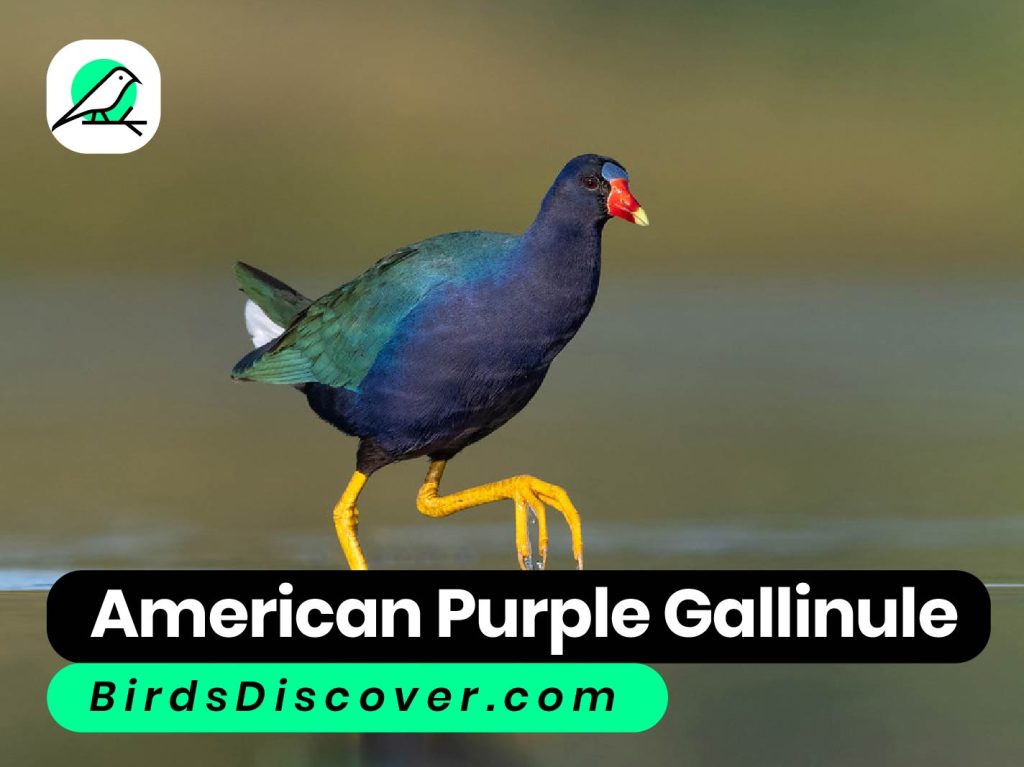
American Purple Gallinule Biography, Sound
| Category | Details |
|---|---|
| Common Name | American Purple Gallinule |
| Scientific Name | Porphyrio martinicus |
| Family | Rallidae (Rail family) |
| Appearance | Rich purple body with a bright blue-green back; red bill with a yellow tip; long, slender legs and bright yellow feet |
| Size | 12 – 16 inches (30 – 40 cm) in length |
| Weight | Approximately 6 – 8 ounces (170 – 225 grams) |
| Habitat | Swamps, marshes, wet meadows in the southeastern U.S. |
| Diet | Aquatic plants, insects, and small invertebrates |
| Nesting | Builds nests in dense vegetation over water |
| Behavior | Known for elaborate courtship displays and melodious calls; adept at navigating dense marsh vegetation |
| Breeding Season | Spring to early summer |
| Conservation Status | Least Concern (though habitat loss can impact local populations) |
Purple-Crested Turaco
The Purple-Crested Turaco (Tauraco porphyreolophus) is a strikingly beautiful bird native to the tropical forests of West and Central Africa. Renowned for its vibrant plumage, it boasts a deep purple crest and rich green body, with a distinctive white underwing that flashes in flight. This bird’s vivid colors are not due to pigments but rather to specialized structural feathers that refract light, creating its dazzling hues. The Purple-Crested Turaco is an arboreal species, adept at navigating the dense canopy of its forest habitat. It primarily feeds on fruits, leaves, and insects, and is known for its loud, distinctive calls that echo through the forest. Its captivating appearance and lively behavior make it a favorite among bird watchers and a symbol of the rich biodiversity found in African rainforests. Despite its beauty, the turaco faces threats from habitat loss, underscoring the need for conservation efforts to protect its natural environment.

Purple-Crested Turaco Biography, Sound
| Aspect | Details |
|---|---|
| Common Name | Purple-Crested Turaco |
| Scientific Name | Tauraco porphyreolophus |
| Family | Musophagidae |
| Distribution | West and Central Africa |
| Habitat | Tropical rainforests and dense woodlands |
| Size | Approximately 40 cm (16 inches) in length |
| Plumage | Deep purple crest, rich green body, white underwings |
| Diet | Fruits, leaves, and insects |
| Behavior | Arboreal, often seen in trees; loud calls |
| Breeding | Monogamous pairs, nests in trees |
| Conservation Status | Least Concern (but threatened by habitat loss) |
Purple Grenadier
The Purple Grenadier (Uraeginthus ianthinogaster) is a strikingly beautiful small bird native to eastern and southern Africa. With its vivid plumage, which includes a rich violet-blue body and contrasting red and green accents, the Purple Grenadier is a favorite among bird enthusiasts. This species is typically found in open woodlands, savannas, and grasslands, where it often forages in small flocks for seeds and insects. Its distinctive appearance, coupled with its melodious calls, makes it a delightful sight and sound in its natural habitat. The Purple Grenadier is also known for its intricate courtship displays, which involve elaborate aerial maneuvers and song. Despite its captivating beauty, this bird is not currently considered threatened, and its population remains stable due to its adaptability to a variety of environments. The Purple Grenadier’s vibrant colors and lively behavior continue to captivate those fortunate enough to observe it in the wild.
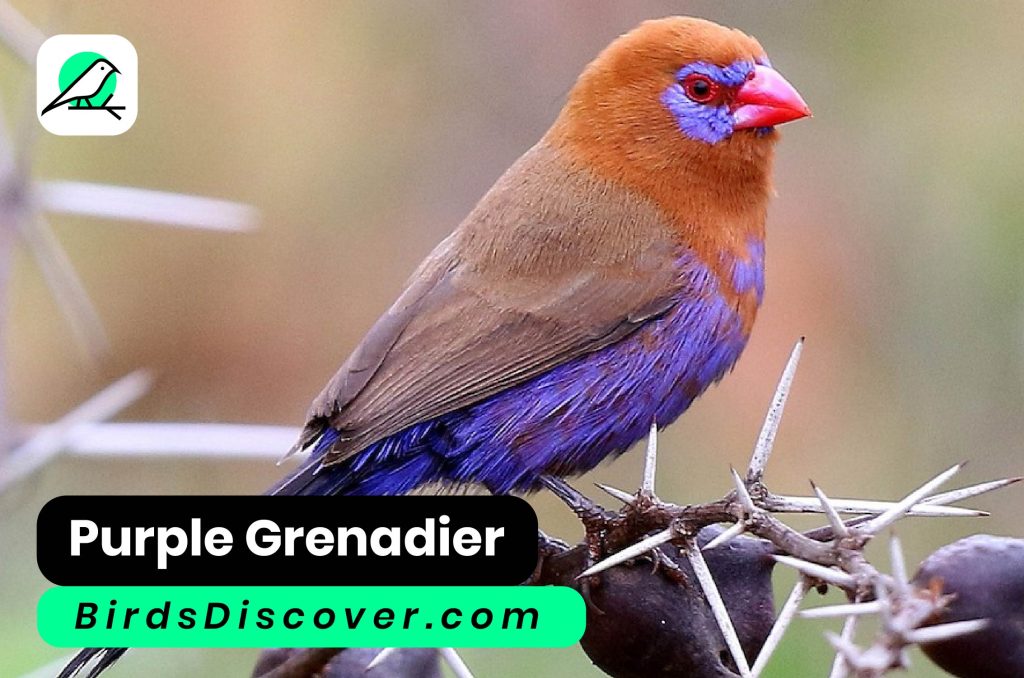
Purple Grenadier Biography
| Aspect | Details |
|---|---|
| Common Name | Purple Grenadier |
| Scientific Name | Uraeginthus ianthinogaster |
| Family | Estrildidae (Estrildid finches) |
| Size | Approximately 11-12 cm (4.3-4.7 inches) in length |
| Weight | Around 10-15 grams |
| Plumage | Vibrant violet-blue body with red and green accents |
| Habitat | Open woodlands, savannas, grasslands |
| Range | Eastern and southern Africa |
| Diet | Seeds, insects, and occasionally fruits |
| Behavior | Forages in small flocks, known for melodious calls |
| Reproduction | Engages in elaborate courtship displays |
| Conservation Status | Not currently threatened; stable population |
Crowned Woodnymph
The Crowned Woodnymph (Thalurania colombica) is a dazzling hummingbird species native to Central and northern South America. Renowned for its iridescent plumage, this bird exhibits a striking mix of emerald green, cobalt blue, and vibrant violet hues that shimmer in the sunlight. The Crowned Woodnymph inhabits a range of forested and semi-open areas, including tropical lowlands and foothills, where it can frequently be spotted hovering near flowering plants and feeders in search of nectar. Its long, forked tail and rapid wing beats enable it to maneuver with remarkable agility. Beyond its visual appeal, this hummingbird is known for its energetic and aggressive behavior, particularly during territorial disputes and mating displays. The Crowned Woodnymph plays a crucial role in its ecosystem by pollinating flowers as it feeds, contributing to the health and diversity of its habitat. Its vivid colors and dynamic presence make it a captivating sight for birdwatchers and nature enthusiasts alike.
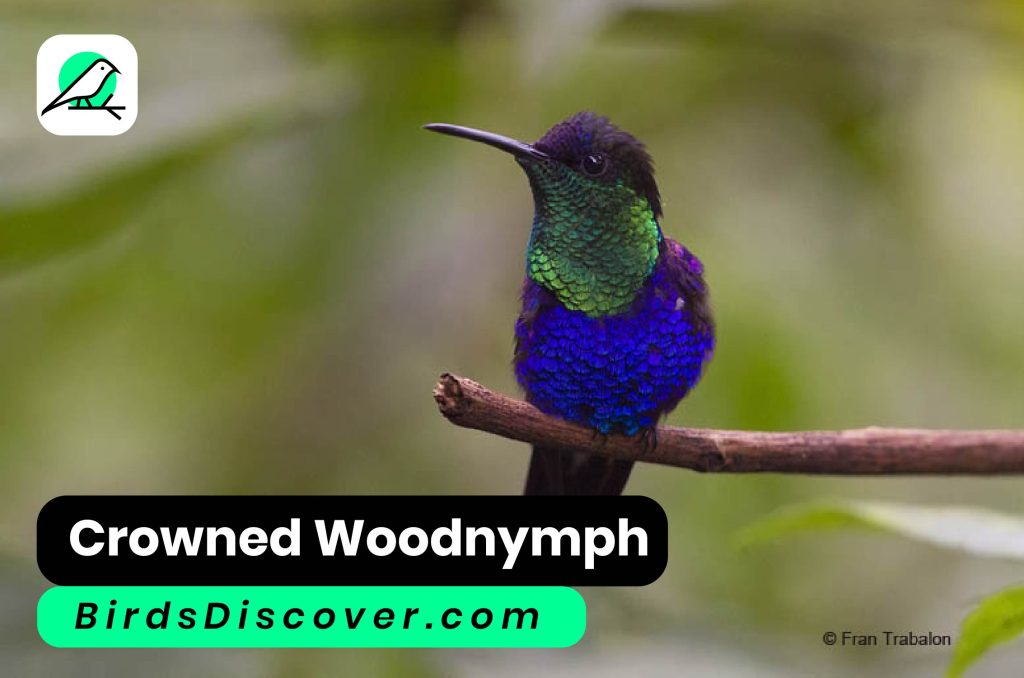
Crowned Woodnymph Biography, Sound
| Aspect | Details |
|---|---|
| Common Name | Crowned Woodnymph |
| Scientific Name | Thalurania colombica |
| Family | Trochilidae (Hummingbirds) |
| Size | Approximately 9-10 cm (3.5-4 inches) in length |
| Weight | Around 4-5 grams |
| Plumage | Iridescent emerald green, cobalt blue, violet |
| Habitat | Forested areas, semi-open regions, tropical lowlands |
| Range | Central and northern South America |
| Diet | Nectar from flowers, supplemented by small insects |
| Behavior | Agile and aggressive, known for territoriality and elaborate displays |
| Reproduction | Males perform intricate aerial displays to attract females |
| Conservation Status | Not currently threatened; stable population |
Indian Peacock
The Indian Peacock (Pavo cristatus), also known as the Indian Peafowl, is renowned for its spectacular and vibrant plumage. Native to the Indian subcontinent, this striking bird is easily recognizable by its magnificent tail feathers, or “train,” which are adorned with iridescent eye-spots in hues of blue, green, and gold. These feathers are fan-shaped and can be fully displayed during courtship rituals, creating an awe-inspiring visual display designed to attract mates. Males are particularly known for their elaborate courtship dances, which involve fanning out their trains and performing intricate movements. Females, or peahens, are less colorful but play a crucial role in the species’ reproduction. Indian Peafowls are versatile in their habitats, thriving in a range of environments from forests to open woodlands and even urban areas. While not currently considered endangered, habitat loss and human activity pose ongoing threats. Their beauty and cultural significance continue to captivate people worldwide.

Indian Peacock Biography, Sound
| Aspect | Details |
|---|---|
| Common Name | Indian Peacock |
| Scientific Name | Pavo cristatus |
| Family | Phasianidae (Pheasants and allies) |
| Size | Males: 180-230 cm (71-91 inches) including tail |
| Weight | Males: 3-6 kg (6.6-13.2 lbs); Females: 2.5-4 kg (5.5-8.8 lbs) |
| Plumage | Males: Iridescent blue and green feathers with eye-spots; Females: Brown and duller hues |
| Habitat | Forests, open woodlands, grasslands, and urban areas |
| Range | Indian subcontinent, including India, Sri Lanka, Bangladesh, and parts of Nepal and Pakistan |
| Diet | Seeds, fruits, insects, small mammals, and reptiles |
| Behavior | Known for elaborate courtship displays and vocal calls; often seen in groups |
| Reproduction | Males display their tail feathers in courtship; females build nests on the ground |
| Conservation Status | Least Concern; stable population, but faces threats from habitat loss and hunting |
Japanese Paradise Flycatcher
The Japanese Paradise Flycatcher (Terpsiphone atrocaudata) is a captivating bird native to Japan, known for its striking appearance and graceful flight. This species is particularly notable for its long, flowing tail feathers and vibrant plumage. The male Japanese Paradise Flycatcher is adorned with a glossy, iridescent blue-black body and an impressive tail that can extend up to 20 centimeters, creating a dramatic display during flight. Females, in contrast, have a more subdued coloration, featuring a brownish body with shorter tail feathers. These birds inhabit deciduous forests and forest edges, where they build delicate nests in the branches. The Japanese Paradise Flycatcher primarily feeds on insects, which it catches in mid-flight with swift, agile movements. Its enchanting appearance and melodious calls make it a favorite among birdwatchers, and its presence is often considered a symbol of beauty and grace in Japanese culture.
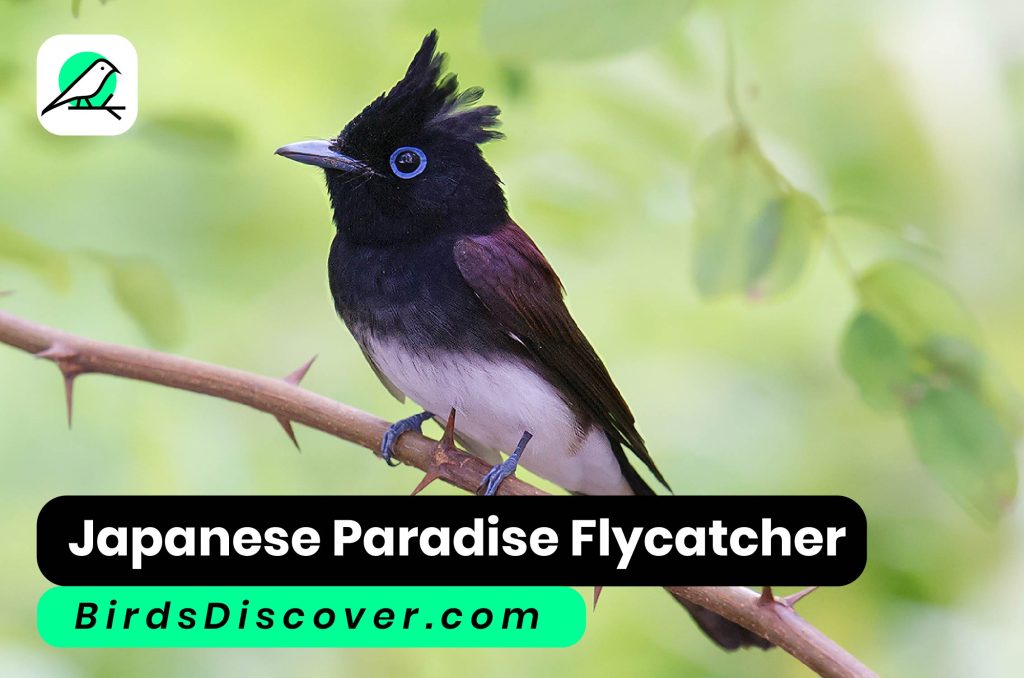
Japanese Paradise Flycatcher Biography, Sound
| Aspect | Details |
|---|---|
| Common Name | Japanese Paradise Flycatcher |
| Scientific Name | Terpsiphone atrocaudata |
| Family | Monarchidae (Monarch flycatchers) |
| Size | Approximately 18-23 cm (7-9 inches) in length |
| Weight | Around 8-10 grams |
| Plumage | Males: Iridescent blue-black with long tail feathers; Females: Brownish with shorter tail |
| Habitat | Deciduous forests, forest edges |
| Range | Japan (mainly Honshu, Shikoku, and Kyushu) |
| Diet | Insects, including beetles and flies |
| Behavior | Agile in flight, performs aerial maneuvers to catch insects; males display elaborate tail feathers |
| Reproduction | Builds cup-shaped nests in trees; males engage in courtship displays to attract females |
| Conservation Status | Least Concern; stable population |
Velvet-Fronted Nuthatch
The Velvet-Fronted Nuthatch (Sitta frontalis) is a strikingly beautiful bird found in the forests of Southeast Asia, including regions of India, Myanmar, and Thailand. This species is distinguished by its vibrant plumage, which features a striking combination of deep blue-gray on the back and a warm chestnut-brown on the underparts, complemented by a velvety, pale front. Known for its agile climbing abilities, the Velvet-Fronted Nuthatch is adept at foraging for insects, seeds, and nuts, which it extracts from tree bark with its strong, pointed beak. It is commonly observed scaling tree trunks and branches in a head-down position, a behavior typical of nuthatches. The bird’s melodious calls and energetic movements make it a lively presence in its forest habitat. Although not currently threatened, habitat destruction poses a potential risk, making conservation efforts important to ensure its continued prosperity.
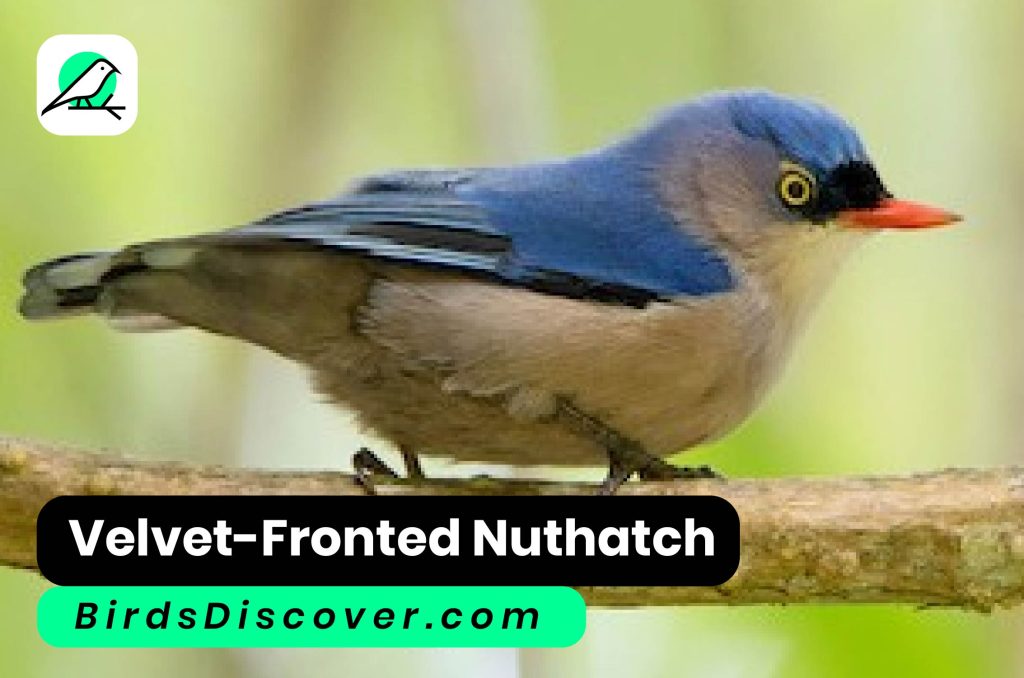
Velvet-Fronted Nuthatch Biography, Sound
| Aspect | Details |
|---|---|
| Common Name | Velvet-Fronted Nuthatch |
| Scientific Name | Sitta frontalis |
| Family | Sittidae (Nuthatches) |
| Size | Approximately 11-12 cm (4.3-4.7 inches) in length |
| Weight | Around 12-15 grams |
| Plumage | Deep blue-gray back, chestnut-brown underparts, and a pale, velvety front |
| Habitat | Forests, woodlands, and sometimes garden areas in Southeast Asia |
| Range | India, Myanmar, Thailand, and surrounding regions |
| Diet | Insects, seeds, nuts, and occasionally fruits |
| Behavior | Agile climber, forages by scaling tree trunks and branches; known for its head-down climbing position |
| Reproduction | Builds nests in tree cavities or artificial sites; lays eggs that both parents help incubate |
| Conservation Status | Least Concern; stable population but potentially affected by habitat loss |
Purplish Jay
The Purplish Jay (Cyanocorax cyanomelas) is a strikingly colorful bird native to the rainforests of Central America, particularly in countries like Costa Rica, Panama, and western Colombia. This medium-sized jay is renowned for its vivid plumage, which features a rich combination of purples, blues, and blacks, making it a standout in its lush, forested habitat. The Purplish Jay is highly social and often seen in small groups or family units, where it exhibits complex vocalizations and lively interactions. It primarily feeds on a diet of fruits, insects, and small vertebrates, utilizing its strong beak to forage in the dense canopy. This species is also known for its intelligence and problem-solving abilities, often observed using tools or engaging in elaborate behaviors. Although not currently threatened, it is vulnerable to habitat destruction, highlighting the importance of conserving its tropical rainforest environment.
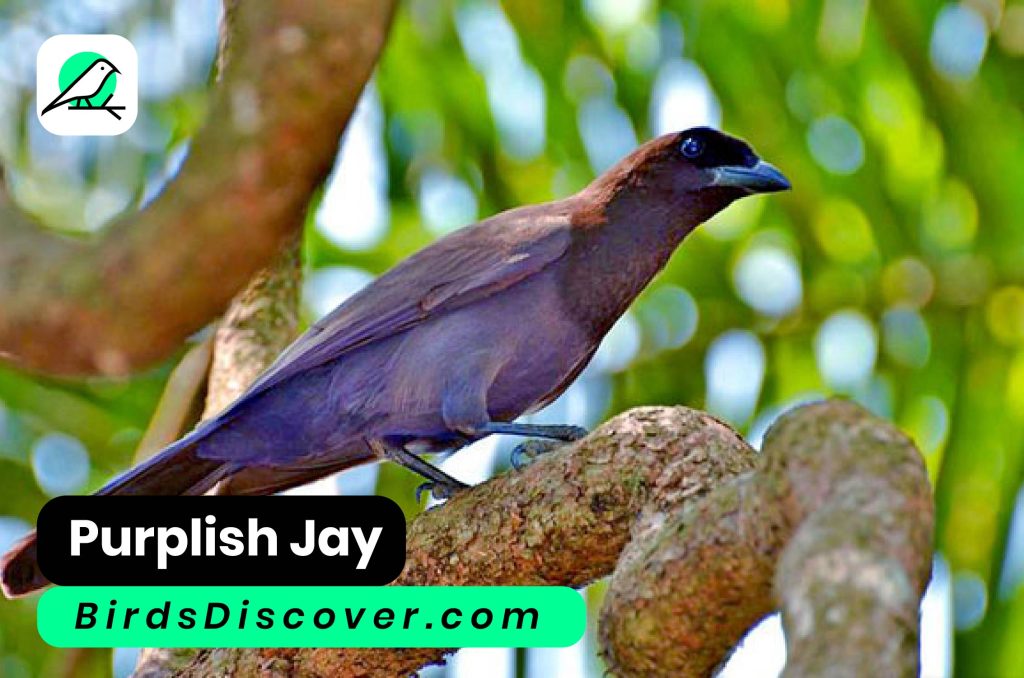
Purplish Jay Biography
| Aspect | Details |
|---|---|
| Common Name | Purplish Jay |
| Scientific Name | Cyanocorax cyanomelas |
| Family | Corvidae (Crows, ravens, and jays) |
| Size | Approximately 30-35 cm (12-14 inches) in length |
| Weight | Around 100-150 grams |
| Plumage | Vivid purples, blues, and blacks |
| Habitat | Tropical rainforests and moist lowland forests |
| Range | Costa Rica, Panama, western Colombia |
| Diet | Fruits, insects, small vertebrates |
| Behavior | Social, often seen in groups; known for complex vocalizations and tool use |
| Reproduction | Builds nests in trees; both parents are involved in raising the young |
| Conservation Status | Least Concern; stable population, but affected by habitat loss |
Crested Quail-Dove
The Crested Quail-Dove (Geotrygon versicolor) is a stunning and elusive bird found in the tropical forests of Central and South America, particularly in countries like Costa Rica, Panama, and Colombia. Characterized by its striking appearance, this dove features a unique crest of feathers on its head, adding a distinctive touch to its otherwise subtle plumage. Its feathers display a rich palette of warm, earthy tones, including chestnut, olive, and gray, which blend seamlessly with the forest undergrowth. The Crested Quail-Dove is a ground-dwelling species, often seen foraging for seeds, fruits, and insects among the leaf litter. It prefers dense, lowland forests and is known for its shy and elusive nature, making it a challenging bird to spot. Its gentle cooing call and elusive behavior add to its mystique, and while it faces some threats from habitat loss, it is currently not considered at risk.
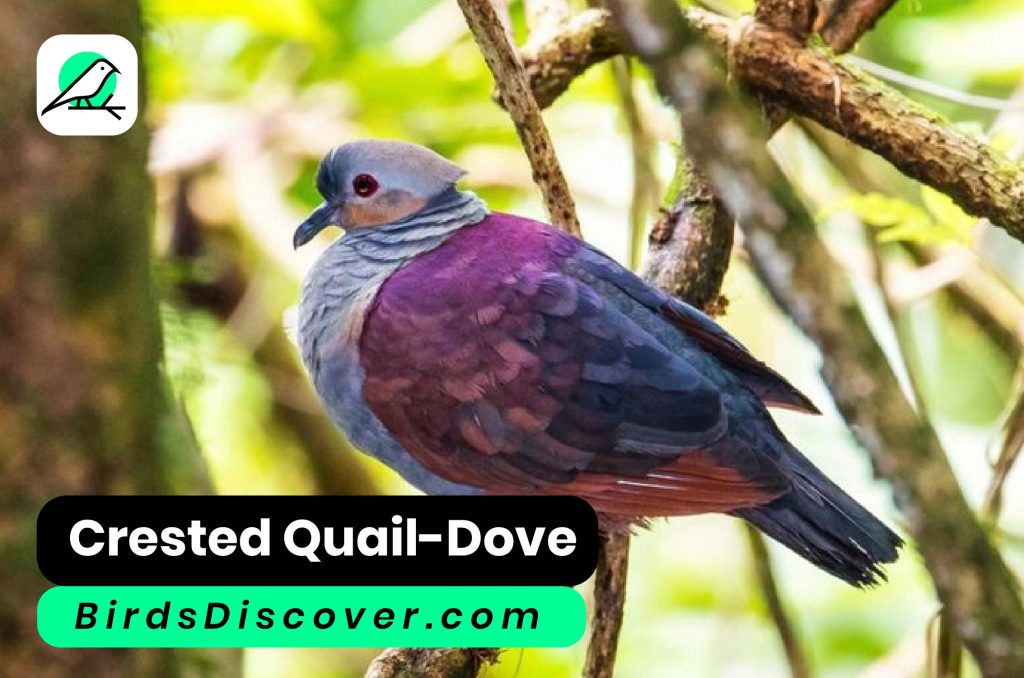
Crested Quail-Dove Biography, Sound
| Aspect | Details |
|---|---|
| Common Name | Crested Quail-Dove |
| Scientific Name | Geotrygon versicolor |
| Family | Columbidae (Doves and pigeons) |
| Size | Approximately 26-28 cm (10-11 inches) in length |
| Weight | Around 150-200 grams |
| Plumage | Warm, earthy tones including chestnut, olive, and gray; distinctive crest on head |
| Habitat | Dense, lowland tropical forests |
| Range | Central and South America, including Costa Rica, Panama, and Colombia |
| Diet | Seeds, fruits, and insects |
| Behavior | Ground-dwelling, shy and elusive; forages in leaf litter |
| Reproduction | Builds nests on the ground or low vegetation; both parents participate in caring for the young |
| Conservation Status | Least Concern; stable population, but threatened by habitat loss |
Formosan Blue Magpie
The Formosan Blue Magpie (Urocissa caerulea) is a strikingly beautiful bird endemic to Taiwan, known for its vibrant plumage and distinctive appearance. With its brilliant blue feathers, contrasting black head, and long, elegant tail, the Formosan Blue Magpie is a standout in its mountainous forest habitat. This medium-sized magpie is highly social and often seen in noisy, energetic flocks that move through the forest canopy, foraging for fruits, insects, and small animals. Its vocalizations are varied and include both melodious and harsh calls. The Formosan Blue Magpie plays a crucial role in its ecosystem by dispersing seeds and maintaining the balance of its habitat. While the species is currently classified as Near Threatened due to habitat loss and fragmentation, conservation efforts are underway to protect its natural environment and ensure the bird’s continued survival. Its striking appearance and lively behavior make it a favorite among birdwatchers and nature enthusiasts.
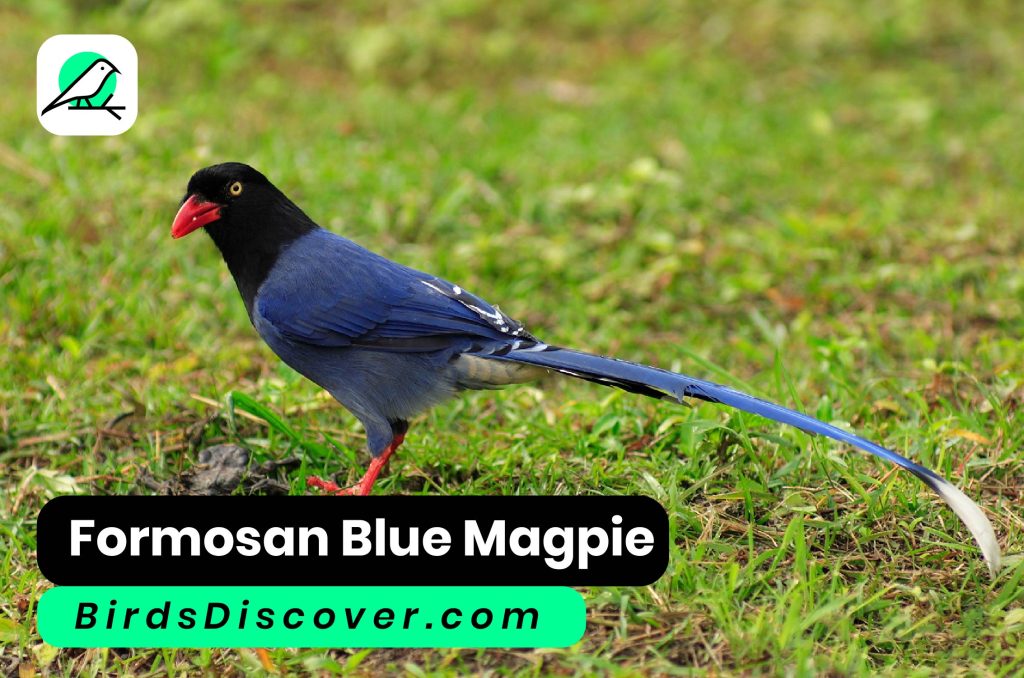
Formosan Blue Magpie Biography, Sound
| Aspect | Details |
|---|---|
| Common Name | Formosan Blue Magpie |
| Scientific Name | Urocissa caerulea |
| Family | Corvidae (Crows, ravens, and jays) |
| Size | Approximately 50 cm (20 inches) in length |
| Weight | Around 200-300 grams |
| Plumage | Vibrant blue with a black head and a long, elegant tail |
| Habitat | Mountainous forests and wooded areas in Taiwan |
| Range | Endemic to Taiwan |
| Diet | Fruits, insects, small animals |
| Behavior | Social, often seen in noisy flocks; forages in the canopy |
| Reproduction | Builds large, conspicuous nests in trees; both parents are involved in rearing young |
| Conservation Status | Near Threatened; faces threats from habitat loss and fragmentation |
Lilac-Breasted Roller
The Lilac-Breasted Roller (Coracias caudatus) is a stunningly vibrant bird native to sub-Saharan Africa, known for its dazzling plumage and striking appearance. This medium-sized roller is easily recognizable by its bright colors, featuring a vivid combination of lilac, turquoise, and green. The Lilac-Breasted Roller’s vibrant feathers and distinctive patterns make it a spectacular sight in its open woodland, savanna, and grassland habitats. It is often seen perched prominently on tree branches or fence posts, where it hunts for insects, small reptiles, and occasionally small mammals. The bird’s spectacular aerial displays and rolling flight patterns, which it uses to attract mates or establish territory, are a hallmark of its behavior. Though not currently threatened, habitat loss and changes in land use pose potential risks. Its striking beauty and captivating flight make it a favorite among birdwatchers and nature enthusiasts.

Lilac-Breasted Roller Biography, Sound`
| Aspect | Details |
|---|---|
| Common Name | Lilac-Breasted Roller |
| Scientific Name | Coracias caudatus |
| Family | Coraciidae (Rollers) |
| Size | Approximately 35-37 cm (14-15 inches) in length |
| Weight | Around 150-200 grams |
| Plumage | Bright lilac breast, turquoise and green wings, and a contrasting head and tail |
| Habitat | Open woodlands, savannas, grasslands |
| Range | Sub-Saharan Africa, from the southern edge of the Sahara to southern Africa |
| Diet | Insects, small reptiles, and occasionally small mammals |
| Behavior | Often seen perched on prominent spots; performs impressive aerial displays and rolling flight patterns |
| Reproduction | Nests in tree cavities or on horizontal branches; both parents participate in raising the young |
| Conservation Status | Least Concern; stable population, though habitat loss may pose future risks |
Fork-Tailed Woodnymph
The Fork-Tailed Woodnymph (Thalurania furcata) is a striking hummingbird native to the forests and woodlands of Central America, ranging from southern Mexico to western Panama. This species is renowned for its vivid plumage, which includes iridescent green and blue feathers on its body and a distinctive forked tail that adds to its elegant appearance. The male Fork-Tailed Woodnymph is particularly notable for its dazzling colors and the impressive display of its tail feathers during courtship. This hummingbird is often found hovering near flowering plants and feeders, where it feeds on nectar and catches small insects. Its rapid wing beats and agile flight allow it to maneuver with precision as it forages. While not currently threatened, the Fork-Tailed Woodnymph’s habitat is impacted by deforestation, which underscores the need for conservation efforts to preserve its natural environment. Its vibrant colors and lively behavior make it a favorite among bird enthusiasts.
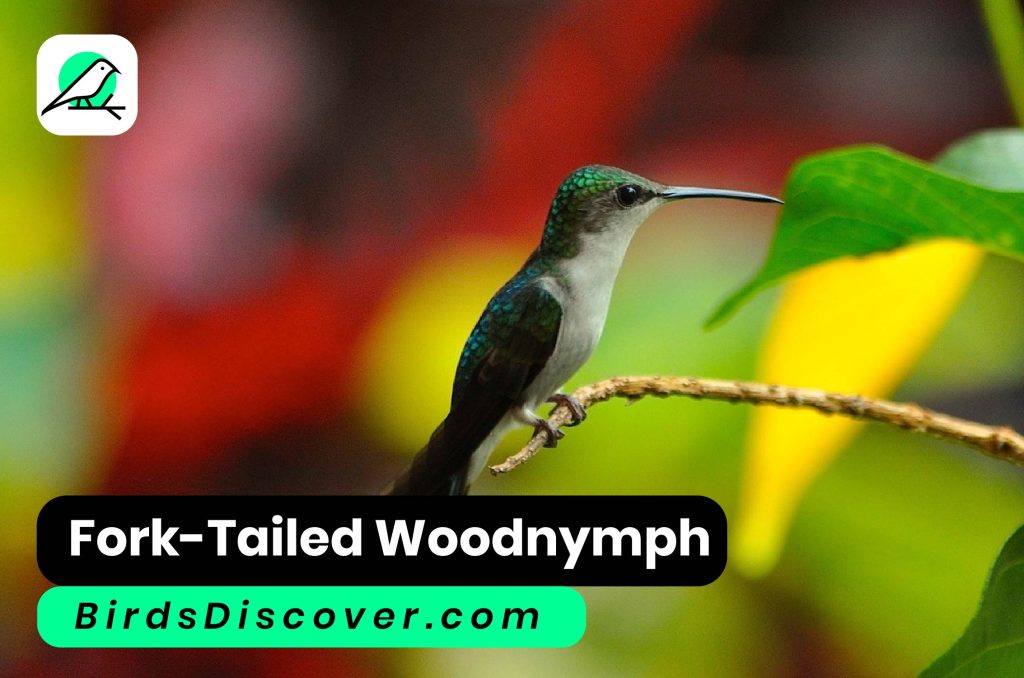
Fork-Tailed Woodnymph Biography, Sound
| Aspect | Details |
|---|---|
| Common Name | Fork-Tailed Woodnymph |
| Scientific Name | Thalurania furcata |
| Family | Trochilidae (Hummingbirds) |
| Size | Approximately 9-10 cm (3.5-4 inches) in length |
| Weight | Around 4-5 grams |
| Plumage | Iridescent green and blue with a distinctive forked tail |
| Habitat | Forests and woodlands in Central America |
| Range | Southern Mexico to western Panama |
| Diet | Nectar from flowers, supplemented by small insects |
| Behavior | Hovering feeding behavior; males perform courtship displays with tail feathers |
| Reproduction | Builds cup-shaped nests in trees or shrubs; both parents help care for the young |
| Conservation Status | Least Concern; stable population but faces habitat threats |
Hartlaub’s Turaco
Hartlaub’s Turaco (Tauraco hartlaubi) is a strikingly colorful bird endemic to the lush, tropical forests of the southwestern part of Kenya and northeastern Tanzania. Renowned for its vibrant plumage, the Hartlaub’s Turaco features a brilliant green body, complemented by a striking deep red underbelly and a distinctive white-tipped tail. Its vivid colors and elegant crest make it a standout in the dense foliage of its forest habitat. This medium-sized bird is known for its lively behavior, including its melodious calls and graceful flight. Hartlaub’s Turaco primarily feeds on fruits, seeds, and leaves, using its strong beak to forage in the tree canopy. Despite its dazzling appearance, it is relatively elusive and can be challenging to spot. Though not currently considered endangered, it faces threats from habitat loss due to deforestation, highlighting the importance of conserving its forest environment. Its vibrant colors and enchanting calls make it a favorite among birdwatchers.

Hartlaub’s Turaco Biography, Sound
| Aspect | Details |
|---|---|
| Common Name | Hartlaub’s Turaco |
| Scientific Name | Tauraco hartlaubi |
| Family | Musophagidae (Turacos) |
| Size | Approximately 36-38 cm (14-15 inches) in length |
| Weight | Around 200-250 grams |
| Plumage | Brilliant green body with deep red underparts and a white-tipped tail |
| Habitat | Tropical forests and dense woodlands |
| Range | Southwestern Kenya and northeastern Tanzania |
| Diet | Fruits, seeds, and leaves |
| Behavior | Lively and vocal; known for melodious calls and graceful flight |
| Reproduction | Builds nests in trees; both parents participate in raising the young |
| Conservation Status | Least Concern; stable population but faces threats from habitat loss |
Garnet Pitta
The Garnet Pitta (Erythropitta granatina) is a stunningly beautiful bird native to the dense forests of the Philippines. Renowned for its striking appearance, this small pitta is characterized by its vibrant plumage, which features a deep garnet-red body, contrasting with bright green wings and a turquoise-blue throat. Its vivid colors and elusive nature make it a prized sight for birdwatchers. The Garnet Pitta inhabits the lowland and montane forests, where it forages for insects, earthworms, and other small invertebrates on the forest floor. It is known for its distinctive calls and secretive behavior, often staying hidden in the undergrowth. Although currently classified as Near Threatened due to habitat loss and deforestation, conservation efforts are underway to protect its natural habitat. The Garnet Pitta’s vibrant colors and elusive demeanor continue to captivate those fortunate enough to encounter it in the wild.

Garnet Pitta Biography, Sound
| Aspect | Details |
|---|---|
| Common Name | Garnet Pitta |
| Scientific Name | Erythropitta granatina |
| Family | Pittidae (Pittas) |
| Size | Approximately 18-20 cm (7-8 inches) in length |
| Weight | Around 50-70 grams |
| Plumage | Deep garnet-red body with bright green wings and turquoise-blue throat |
| Habitat | Lowland and montane forests |
| Range | The Philippines |
| Diet | Insects, earthworms, and other small invertebrates |
| Behavior | Elusive and secretive; known for distinctive calls and foraging on the forest floor |
| Reproduction | Nests on the ground, often hidden in dense vegetation; both parents care for the young |
| Conservation Status | Near Threatened; faces threats from habitat loss and deforestation |
Purple Swamphen
The Purple Swamphen (Porphyrio porphyrio) is a strikingly colorful bird found across a broad range from southern Europe and Africa to Asia and Australia. Recognizable by its vibrant plumage, this large rail features a rich purplish-blue body, a bright red bill and legs, and a distinctive greenish-blue patch on its back. The Purple Swamphen thrives in wetlands, marshes, and reed beds, where it forages for a varied diet of seeds, fruits, insects, and aquatic plants. This bird is known for its strong, agile legs, which allow it to navigate dense vegetation and shallow water with ease. Its loud, distinctive calls are a common feature of its habitat. Although widespread and adaptable, the Purple Swamphen faces localized threats from habitat destruction and pollution. Conservation efforts are important to maintain healthy populations and preserve their wetland habitats. Its vivid colors and unique behavior make it a fascinating subject for bird enthusiasts.
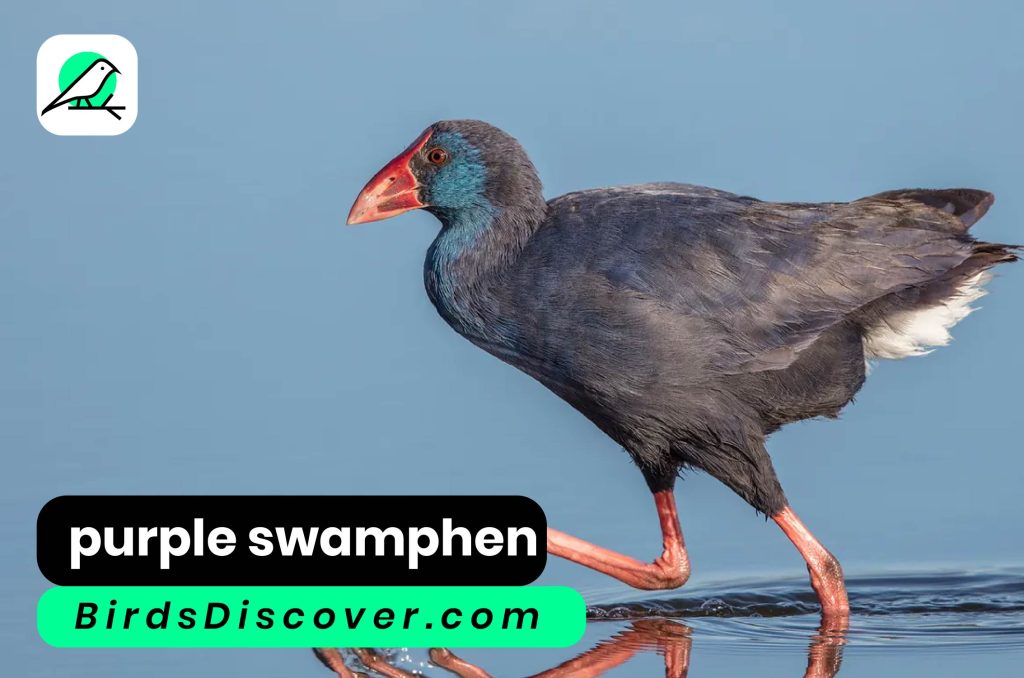
Purple Swamphen Biography, Sound
| Attribute | Details |
|---|---|
| Scientific Name | Porphyrio porphyrio |
| Common Names | Purple Swamphen, Purple Gallinule, and in some regions, the Blue Swamphen |
| Family | Rallidae |
| Order | Gruiformes |
| Habitat | Wetlands, marshes, and reed beds; found in various freshwater environments |
| Range | Southern Europe, Africa, Asia, Australia, and several islands in the Pacific |
| Physical Description | Large, conspicuously colored bird with deep blue or purple plumage, red bill, and green legs |
| Size | Approximately 35–50 cm (14–20 inches) in length; wingspan around 60–70 cm (24–28 inches) |
| Diet | Omnivorous; feeds on seeds, roots, insects, small fish, and other aquatic invertebrates |
| Breeding Season | Varies by location; typically during the wet season in tropical regions or spring in temperate zones |
| Nesting | Builds a nest in dense vegetation near water; nests are often built on floating vegetation |
| Behavior | Shy and elusive; often seen walking through vegetation or swimming in water |
| Vocalization | Known for its distinctive calls, including a variety of whistles and grunts |
| Conservation Status | Not currently listed as threatened; common in many parts of its range |
Boat-Tailed Grackle
The Boat-Tailed Grackle is a striking bird found primarily in the southeastern United States, known for its distinctive, elongated tail that fans out like a boat’s stern. Males are particularly notable for their iridescent plumage, which shifts in color from deep purple to black, making them stand out in their habitats. They are often seen in open fields, marshes, and coastal areas where their loud, varied calls and dramatic displays are common. The species exhibits a fascinating range of behaviors, including complex vocalizations and aggressive interactions during the breeding season. Their diet is diverse, encompassing insects, small animals, and plant matter, reflecting their adaptability. Socially, Boat-Tailed Grackles are known for their communal roosting and breeding, where they build bulky nests in trees or shrubs. Their striking appearance and lively behavior make them a captivating subject for bird watchers and nature enthusiasts alike.
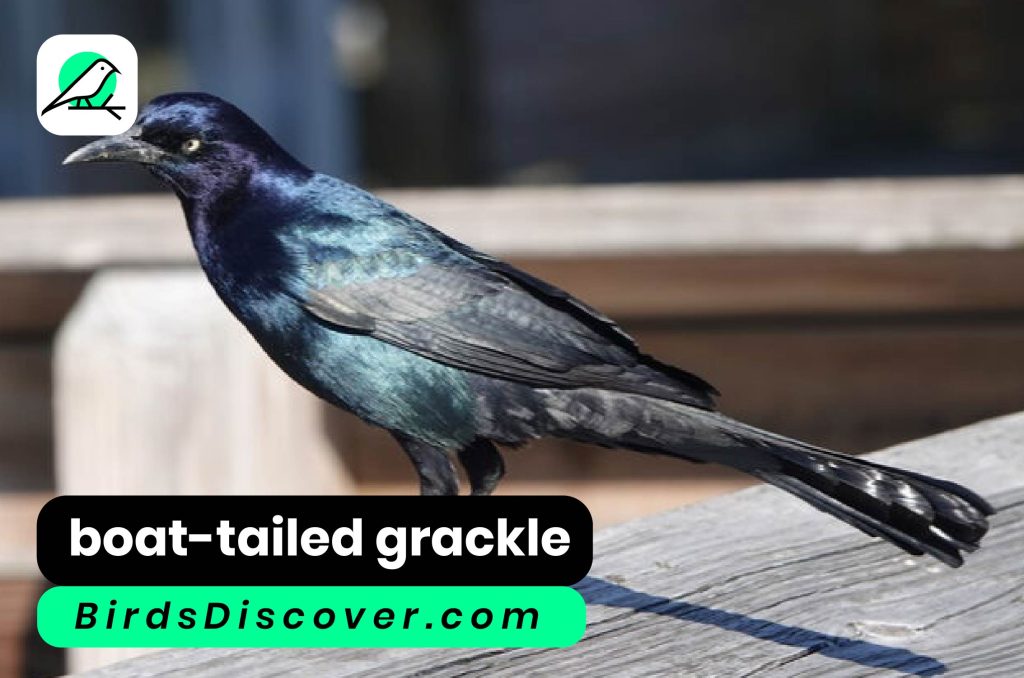
Boat-Tailed Grackle Biography, Sound
| Aspect | Details |
|---|---|
| Scientific Name | Quiscalus major |
| Common Name | Boat-Tailed Grackle |
| Family | Icteridae |
| Range | Southeastern United States, from New Jersey to Florida, and west to Texas |
| Habitat | Coastal marshes, open fields, urban areas, and mangroves |
| Physical Description | Males are iridescent black with a distinctive, long, fan-shaped tail; females are brown and less iridescent |
| Diet | Omnivorous: insects, small animals, fruits, seeds, and garbage |
| Behavior | Social, often seen in large groups; males perform elaborate displays and vocalizations during breeding |
| Nesting | Builds bulky nests in trees, shrubs, or man-made structures |
| Conservation Status | Least Concern |
| Interesting Fact | Males engage in dramatic aerial displays and complex vocalizations to attract mates and defend territory |
Violaceous Euphonia
The Violaceous Euphonia (Euphonia violacea) is a strikingly colorful songbird native to the lowland forests of northern South America. Recognizable by its vibrant plumage, the male boasts a dazzling mix of violet and blue hues with a contrasting yellow belly, while the female is more subdued, displaying a greenish-yellow body with less intense coloration. This small, arboreal bird is typically found in pairs or small groups, flitting through the forest canopy and feeding primarily on fruits and insects. The Violaceous Euphonia’s melodious song, a series of sweet, high-pitched notes, adds a pleasing auditory dimension to its lush habitat. Despite its beauty, the species faces threats from habitat loss due to deforestation, which impacts its numbers and distribution. Conservation efforts are crucial to preserving the rich biodiversity of its rainforest home and ensuring the continued survival of this enchanting bird.
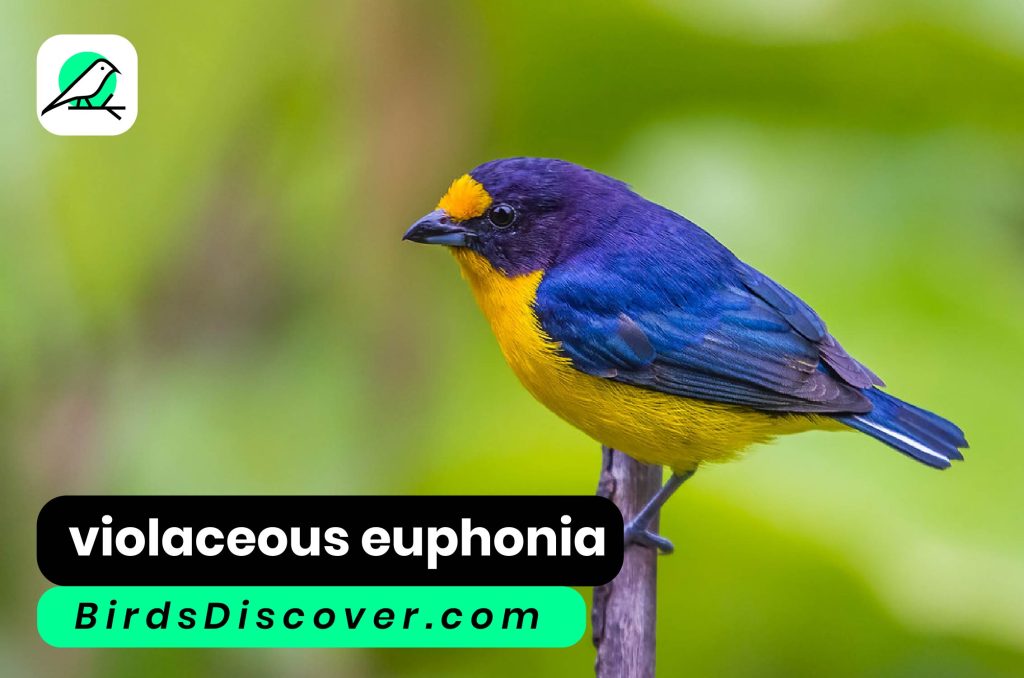
Violaceous Euphonia Biography, Sound
| Attribute | Details |
|---|---|
| Common Name | Violaceous Euphonia |
| Scientific Name | Euphonia violacea |
| Family | Fringillidae (Finches and allies) |
| Native Range | Northern South America (Colombia, Venezuela, Guyana, and Brazil) |
| Habitat | Lowland tropical forests and forest edges |
| Physical Description | Males: Violet and blue plumage with a yellow belly; Females: Greenish-yellow with less intense coloration |
| Size | Approximately 10-11 cm (4-4.3 inches) in length |
| Diet | Fruits, seeds, and insects |
| Behavior | Typically found in pairs or small groups; active and agile in the canopy |
| Song | A series of sweet, high-pitched notes |
| Conservation Status | Vulnerable due to habitat loss from deforestation |
| Notable Features | Bright coloration and melodious song; significant for its role in forest ecosystems |
Purple Finch
The Purple Finch (Haemorhous purpureus) is a charming and colorful songbird found across North America, particularly in the eastern and northern regions of the continent. Males are easily recognizable by their striking plumage, which features a rich, raspberry-red coloration on the head, throat, and chest, contrasting with brownish streaks on the back and sides. Females and juveniles, in contrast, display a more subdued, streaky brown appearance that helps them blend into their surroundings. Purple Finches prefer a variety of habitats, including deciduous and mixed forests, as well as suburban areas with ample tree cover. They are known for their pleasant, melodious songs that can vary regionally. The diet of the Purple Finch mainly consists of seeds, berries, and insects. Despite their vibrant appearance, they face challenges from habitat loss and climate change, making ongoing conservation efforts important for their continued well-being.
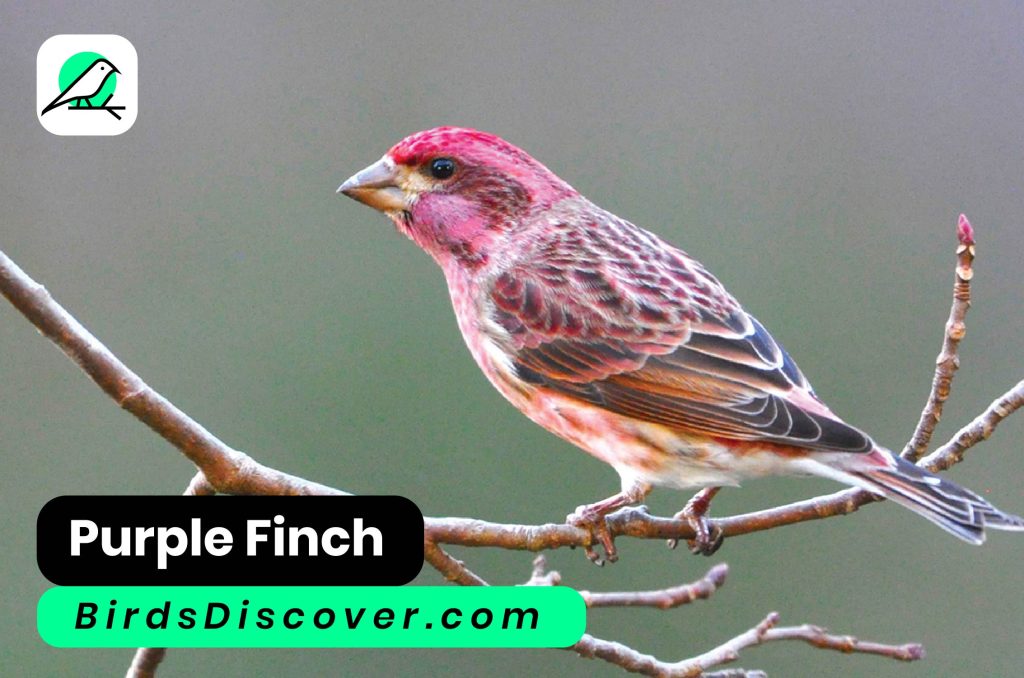
Purple Finch Biography, Sound
| Attribute | Details |
|---|---|
| Common Name | Purple Finch |
| Scientific Name | Haemorhous purpureus |
| Family | Fringillidae (Finches and allies) |
| Native Range | North America (eastern and northern regions) |
| Habitat | Deciduous and mixed forests, suburban areas with tree cover |
| Physical Description | Males: Raspberry-red head, throat, and chest; brownish streaked back; Females: Streaky brown plumage |
| Size | Approximately 15-18 cm (5.9-7.1 inches) in length |
| Diet | Seeds, berries, and insects |
| Behavior | Often seen in flocks; known for melodic and varied songs |
| Song | Melodious and complex, with regional variations |
| Conservation Status | Least Concern, but faces threats from habitat loss and climate change |
| Notable Features | Bright coloration in males; pleasant, varied songs; adaptable to different habitats |
Santa Cruz Ground Dove
The Santa Cruz Ground Dove (Amazona tucumana) is a small, elusive bird endemic to the arid scrublands and semi-desert regions of the Santa Cruz province in Argentina. Characterized by its understated yet elegant appearance, this dove sports a pale grayish-brown plumage with subtle patterns that blend harmoniously with its dry, rocky habitat. Its small size and ground-dwelling habits make it somewhat challenging to spot, as it forages primarily for seeds and insects among the sparse vegetation. Despite its low-profile lifestyle, the Santa Cruz Ground Dove is a crucial part of its ecosystem, contributing to seed dispersal and insect control. However, the species faces significant threats from habitat loss due to agricultural expansion and land degradation. Conservation efforts are essential to protect this unique dove and preserve the delicate balance of its arid environment.

Santa Cruz Ground Dove Biography, Sound
| Attribute | Details |
|---|---|
| Common Name | Santa Cruz Ground Dove |
| Scientific Name | Columbina tucumana |
| Family | Columbidae (Doves and Pigeons) |
| Native Range | Santa Cruz province, Argentina |
| Habitat | Arid scrublands and semi-desert regions |
| Physical Description | Pale grayish-brown plumage with subtle patterns |
| Size | Approximately 20 cm (7.9 inches) in length |
| Diet | Seeds and insects |
| Behavior | Ground-dwelling; forages among sparse vegetation |
| Conservation Status | Near Threatened due to habitat loss and land degradation |
| Notable Features | Elusive and challenging to spot; important for seed dispersal and insect control |
Barn Swallow
The Barn Swallow (Hirundo rustica) is a familiar and graceful bird known for its distinctive forked tail and striking coloration. With its deep blue upperparts, rufous underparts, and a creamy buff throat, the Barn Swallow is a vibrant presence in both rural and urban environments. It is widely distributed across the Northern Hemisphere, migrating annually between its breeding grounds in North America, Europe, and Asia, and its wintering areas in Africa, South America, and the Indian subcontinent. Known for its agile flight, the Barn Swallow excels at catching insects in mid-air, which makes it a valuable natural pest controller. These birds often build their distinctive mud nests on the eaves of barns, buildings, and bridges, which has earned them their name. Despite facing challenges from habitat loss and changing agricultural practices, the Barn Swallow remains a symbol of summer and renewal in many cultures due to its widespread presence and seasonal migration.
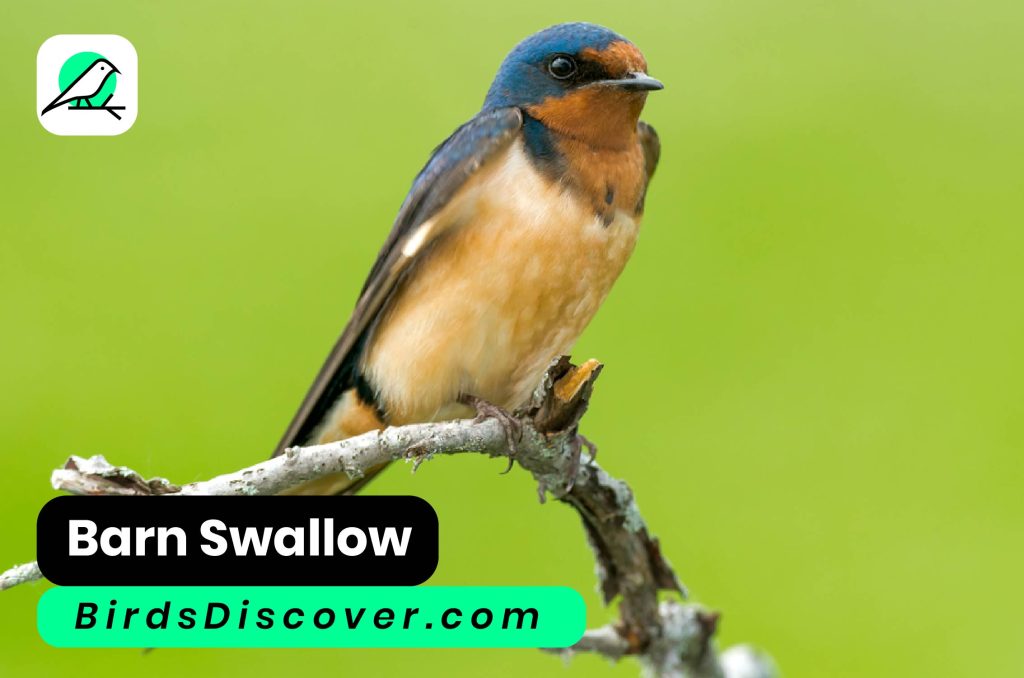
Barn Swallow Biography, Sound
| Attribute | Details |
|---|---|
| Common Name | Barn Swallow |
| Scientific Name | Hirundo rustica |
| Family | Hirundidae (Swallows and Martins) |
| Native Range | Northern Hemisphere (breeding) and Southern Hemisphere (wintering) |
| Habitat | Open areas near water, rural and urban environments, often nesting on buildings |
| Physical Description | Deep blue upperparts, rufous underparts, creamy buff throat, forked tail |
| Size | Approximately 16-19 cm (6.3-7.5 inches) in length |
| Diet | Insects caught in flight |
| Behavior | Agile fliers, known for building mud nests on man-made structures |
| Migration | Migrates between breeding grounds in the Northern Hemisphere and wintering areas in Africa, South America, and the Indian subcontinent |
| Conservation Status | Least Concern, though faces challenges from habitat loss and changes in agriculture |
| Notable Features | Symbol of summer and renewal; important natural pest controller |
Black-Capped Kingfisher
The Black-Capped Kingfisher (Halcyon pileata) is a striking and vibrant bird native to Southeast Asia. Easily identifiable by its vivid plumage, it features a brilliant blue back, a rich orange belly, and a distinctive black cap on its head, which contrasts sharply with its white face and throat. This kingfisher prefers forested riverbanks, mangroves, and coastal areas, where it hunts for fish and small aquatic creatures with its sharp, pointed beak. Its hunting technique involves perching quietly before diving with precision to catch prey. The Black-Capped Kingfisher’s call is a distinctive, harsh “kik-kik-kik” that can be heard echoing through its habitat. While it is generally not considered threatened, the species is sensitive to habitat destruction and pollution, which can impact its food sources and nesting sites. Conservation efforts are important to ensure the continued health of its ecosystems and the survival of this vibrant bird.
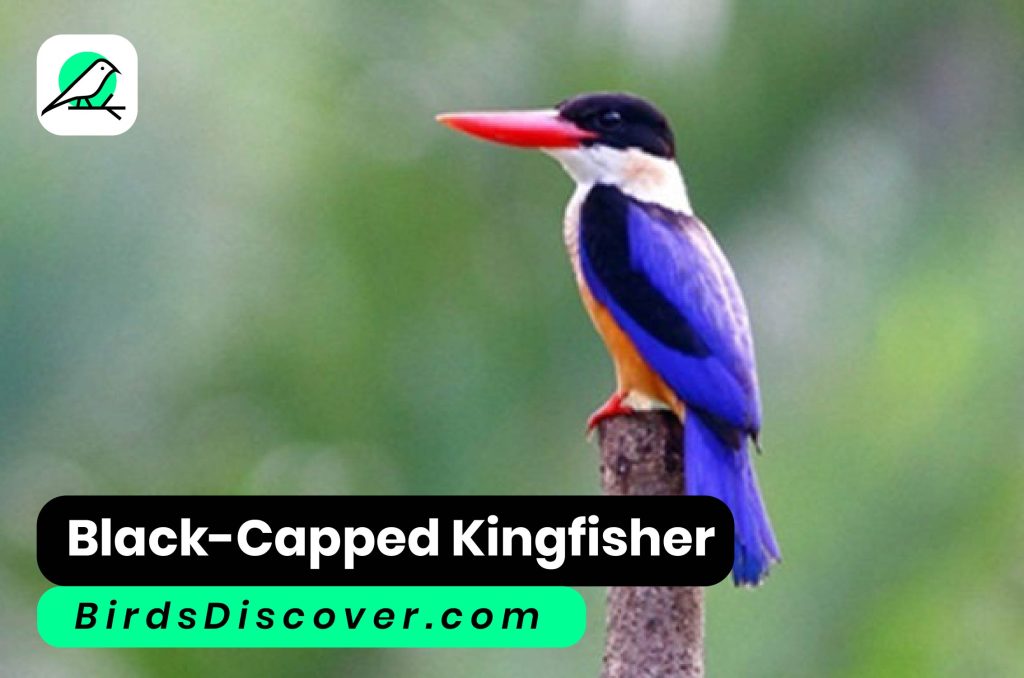
Black-Capped Kingfisher Biography, Sound
| Attribute | Details |
|---|---|
| Common Name | Black-Capped Kingfisher |
| Scientific Name | Halcyon pileata |
| Family | Alcedinidae (Kingfishers) |
| Native Range | Southeast Asia (including Thailand, Malaysia, Indonesia, and the Philippines) |
| Habitat | Forested riverbanks, mangroves, and coastal areas |
| Physical Description | Blue back, orange belly, black cap, white face and throat |
| Size | Approximately 26-28 cm (10.2-11 inches) in length |
| Diet | Fish, small aquatic creatures, and occasionally insects |
| Behavior | Perches quietly before diving to catch prey; distinctive call |
| Call | Harsh, repetitive “kik-kik-kik” |
| Conservation Status | Least Concern; faces threats from habitat destruction and pollution |
| Notable Features | Vibrant plumage; skilled hunter of aquatic prey |
Scrub Jay
The Scrub Jay (Aphelocoma coerulescens) is a captivating bird native to the western United States, particularly in scrubby and arid regions. With its striking appearance, it boasts a vivid blue coloration on its head, back, and tail, complemented by a grayish-white underbelly. Its prominent, slightly curved beak and lively demeanor make it a frequent sight in its habitat. Scrub Jays are highly intelligent and social, often seen in small, noisy groups as they forage for insects, seeds, and berries. They are known for their complex social structures and behaviors, including cooperative breeding where family members help raise young. These birds are also adept at hiding food caches, demonstrating impressive spatial memory. Although the Scrub Jay faces habitat threats from urbanization and habitat loss, it remains a resilient and adaptable species, playing a vital role in the ecosystem by dispersing seeds and controlling insect populations.
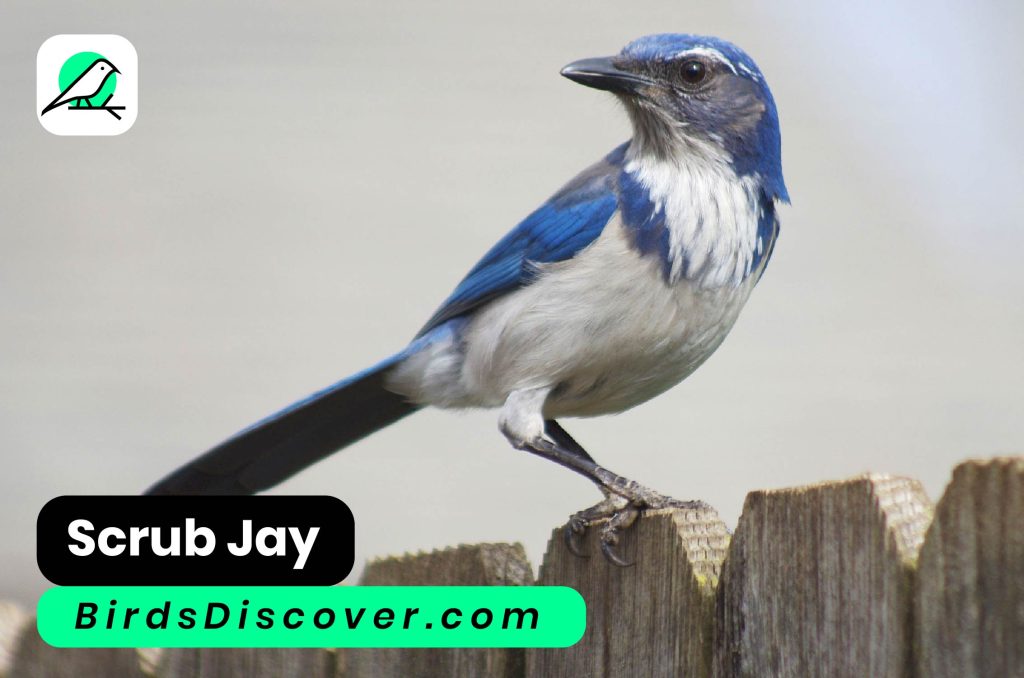
Scrub Jay Biography, Sound
| Attribute | Details |
|---|---|
| Common Name | Scrub Jay |
| Scientific Name | Aphelocoma coerulescens |
| Family | Corvidae (Crows and Jays) |
| Native Range | Western United States, particularly in scrubby and arid regions |
| Habitat | Scrublands, open woodlands, and desert areas |
| Physical Description | Vivid blue head, back, and tail; grayish-white underbelly |
| Size | Approximately 27-30 cm (10.6-11.8 inches) in length |
| Diet | Insects, seeds, berries, and small vertebrates |
| Behavior | Social and intelligent; often seen in noisy groups; adept at food caching |
| Social Structure | Cooperative breeding; family members help raise young |
| Conservation Status | Least Concern; threatened by habitat loss and urbanization |
| Notable Features | Complex social behaviors and spatial memory for food caching |
Southern Carmine Bee-Eater
The Southern Carmine Bee-Eater (Merops nubicus) is a strikingly colorful bird native to southern Africa, renowned for its vivid plumage and dynamic behavior. This bee-eater features a rich carmine red body with a contrasting turquoise-blue face and underparts, complemented by a slender, elongated tail with distinctive forked tips. It inhabits savannas, open woodlands, and the edges of forests, where it nests in burrows along sandy banks. As its name suggests, the Southern Carmine Bee-Eater primarily feeds on bees and other flying insects, which it catches in mid-air with remarkable agility. Its impressive aerial displays and vibrant colors make it a favorite among birdwatchers. Though currently not facing major threats, it is important to monitor changes in its habitat, as deforestation and habitat degradation could impact its populations. The Southern Carmine Bee-Eater’s vivid appearance and ecological role make it a standout species in its African range.
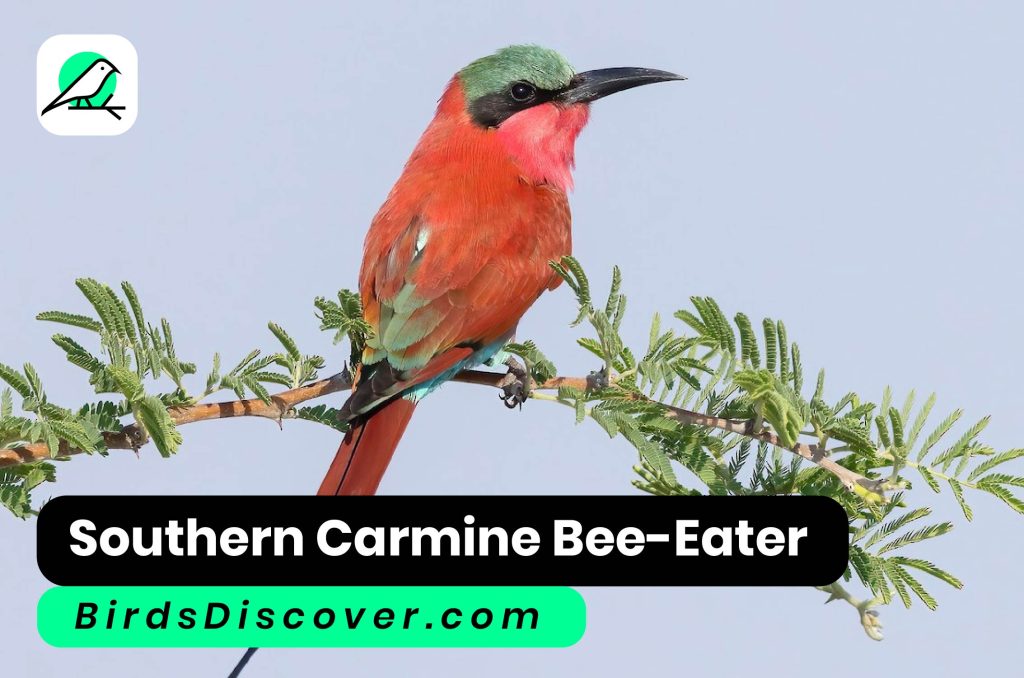
Southern Carmine Bee-Eater Biography, Sound
| Attribute | Details |
|---|---|
| Common Name | Southern Carmine Bee-Eater |
| Scientific Name | Merops nubicus |
| Family | Meropidae (Bee-Eaters) |
| Native Range | Southern Africa (including South Africa, Botswana, and Zimbabwe) |
| Habitat | Savannas, open woodlands, and forest edges |
| Physical Description | Rich carmine red body with turquoise-blue face and underparts; forked tail |
| Size | Approximately 26-28 cm (10.2-11 inches) in length |
| Diet | Primarily bees, along with other flying insects |
| Behavior | Agile fliers; nests in burrows along sandy banks |
| Nesting | Burrow-nesting in sandy or loamy soil |
| Conservation Status | Least Concern; monitored for habitat changes |
| Notable Features | Vibrant coloration; skilled aerial insectivore |
Western Violet-Backed Sunbird
The Western Violet-Backed Sunbird (Anthreptes longuemareus) is a dazzling small bird native to West Africa, particularly found in tropical and subtropical regions. This sunbird is renowned for its striking plumage, with males exhibiting a vivid violet back and bright yellow underparts, creating a stunning contrast that makes them stand out in their lush habitat. The species thrives in a variety of environments, including dense forests, forest edges, and even plantations. As a nectar-feeding bird, the Western Violet-Backed Sunbird plays a crucial role in pollination, visiting flowers with its slender, curved beak. It also feeds on insects and small invertebrates. Its high-pitched, melodious calls and energetic foraging behaviors are typical of sunbirds. Although not currently listed as threatened, habitat loss from deforestation poses a potential risk. Conservation efforts are important to protect this vibrant species and its vital ecological role.

Western Violet-Backed Sunbird Biography, Sound
| Attribute | Details |
|---|---|
| Common Name | Western Violet-Backed Sunbird |
| Scientific Name | Anthreptes longuemareus |
| Family | Nectariniidae (Sunbirds) |
| Native Range | West Africa (including countries like Ghana, Nigeria, and Cameroon) |
| Habitat | Dense forests, forest edges, and plantations |
| Physical Description | Males: Violet back, bright yellow underparts; Females: More subdued colors |
| Size | Approximately 11-13 cm (4.3-5.1 inches) in length |
| Diet | Nectar, insects, and small invertebrates |
| Behavior | Active forager; important pollinator |
| Calls | High-pitched and melodious |
| Conservation Status | Least Concern; potential risk from habitat loss |
| Notable Features | Vibrant coloration; crucial role in pollination |
Purple Sunbird
The Purple Sunbird (Cinnyris asiaticus) is a striking and agile bird native to South Asia, spanning from India to Sri Lanka and extending into parts of Southeast Asia. Males are particularly eye-catching with their iridescent purple and blue plumage, contrasting vividly with their yellow belly, while females and juveniles exhibit more muted brownish tones. These sunbirds are commonly found in a range of habitats, including gardens, scrublands, and open forests, where they are highly active and vocal. As expert nectar feeders, Purple Sunbirds play a crucial role in pollination, using their long, slender bills to access nectar from a variety of flowers. They are also known to consume insects and spiders, adding protein to their diet. Their melodious calls and dynamic flight patterns make them a delight for birdwatchers. Despite being adaptable, habitat loss and changes in land use can impact their populations, highlighting the need for ongoing conservation efforts.
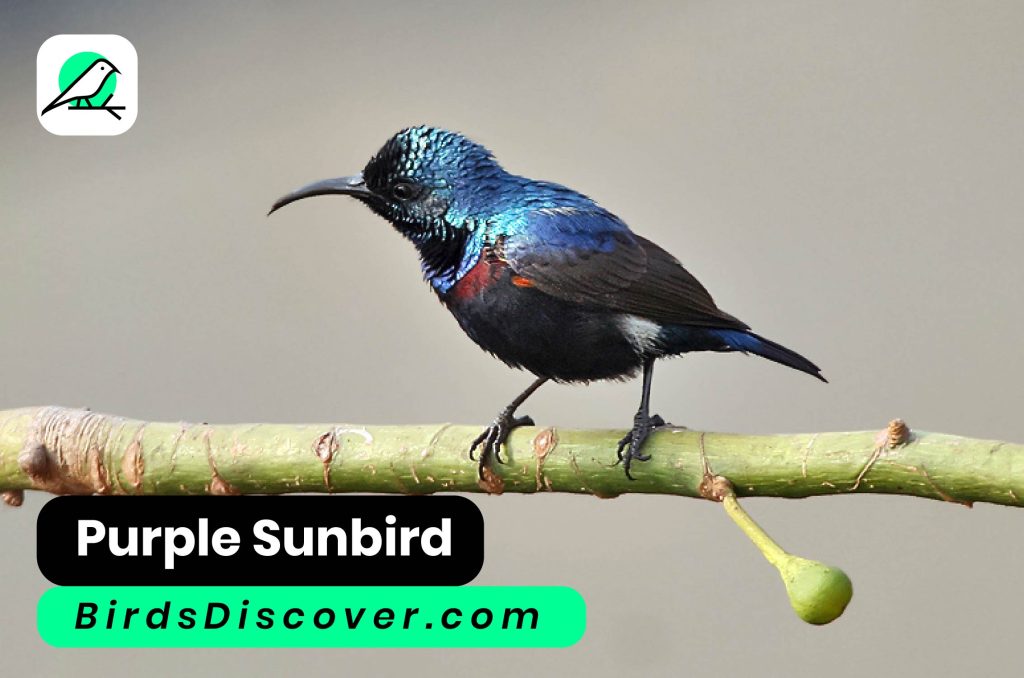
Purple Sunbird Biography, Sound
| Category | Details |
|---|---|
| Common Name | Purple Sunbird |
| Scientific Name | Cinnyris asiaticus |
| Family | Nectariniidae (Sunbirds) |
| Habitat | Tropical and subtropical regions of Asia |
| Range | From the Indian subcontinent to Southeast Asia, including parts of China, Thailand, and Malaysia |
| Appearance | Males: Iridescent purple-blue body with a black head and throat; Females: Olive-brown with a yellow belly |
| Size | About 10-12 cm (4-5 inches) in length |
| Diet | Primarily nectar from flowers; also insects and spiders |
| Breeding | Builds a small, hanging cup-shaped nest; lays 1-2 eggs per clutch |
| Call/Song | Various melodic and chirping calls; songs are used in mating displays |
| Behavior | Active and agile, often seen flitting among flowers; territorial during breeding season |
| Conservation Status | Least Concern (IUCN) |
Varied Bunting
The Varied Bunting (Passerina versicolor) is a strikingly beautiful songbird native to the southwestern United States and Mexico. Males display vibrant plumage, featuring a vivid blue head, rich red chest, and yellowish belly, creating a stunning contrast that captivates birdwatchers and nature enthusiasts alike. Females, while less colorful, exhibit subtle browns and yellows, allowing them to blend seamlessly into their surroundings. These birds inhabit arid regions, often found in brushy areas, shrubby slopes, and along the edges of fields. Their melodious songs and calls contribute to the lively ambiance of their habitat, particularly during the breeding season. Varied Buntings primarily feed on seeds and berries, foraging among vegetation and on the ground. They are known for their nomadic behavior, often migrating in search of food and suitable nesting sites. Conservation efforts are essential to protect their habitats from urbanization and agricultural expansion, ensuring that future generations can admire these remarkable birds.
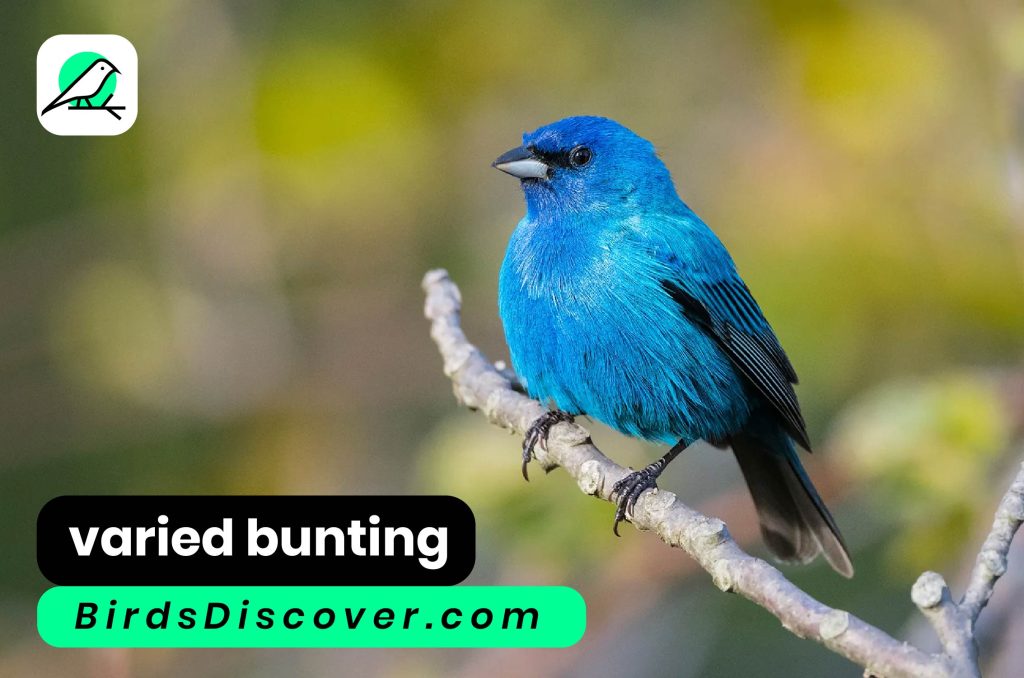
Varied Bunting Biography, Sound
| Attribute | Details |
|---|---|
| Common Name | Varied Bunting |
| Scientific Name | Passerina versicolor |
| Family | Cardinalidae |
| Order | Passeriformes |
| Range | Southwestern United States, Mexico, Central America |
| Habitat | Arid and semi-arid regions, including scrublands, open woodlands, and desert edges |
| Size | Approximately 14 cm (5.5 inches) in length |
| Plumage Description | Males: Brightly colored with a mix of red, blue, and green; Females: More muted, with olive-brown tones |
| Diet | Seeds, fruits, and insects |
| Behavior | Often seen in pairs or small groups; tends to forage on the ground and in low vegetation |
| Call | Melodious, musical phrases, often described as a series of clear notes |
| Conservation Status | Least Concern (stable population, though local declines can occur) |
| Notable Characteristics | Vibrant coloration in males, adaptability to various arid environments |
Purple-breasted Cotinga
The Purple-breasted Cotinga (Cotinga cotinga) is a striking bird found in the lush rainforests of northern South America, particularly in parts of Colombia and Venezuela. Renowned for its vivid coloration, the male displays a brilliant plumage of iridescent purple on its chest, contrasted with a vibrant green head and a contrasting black back. This dramatic color scheme makes it a standout in its dense forest habitat. Measuring about 23 centimeters in length, the Purple-breasted Cotinga primarily feeds on fruits, which it forages for in the canopy. Its call is a series of melodious, low-pitched notes that resonate through the forest. Due to its specific habitat requirements and the ongoing deforestation in its range, the species faces challenges, although it is currently listed as Least Concern. Conservation efforts are crucial to preserve the delicate ecosystems that support this stunning bird.
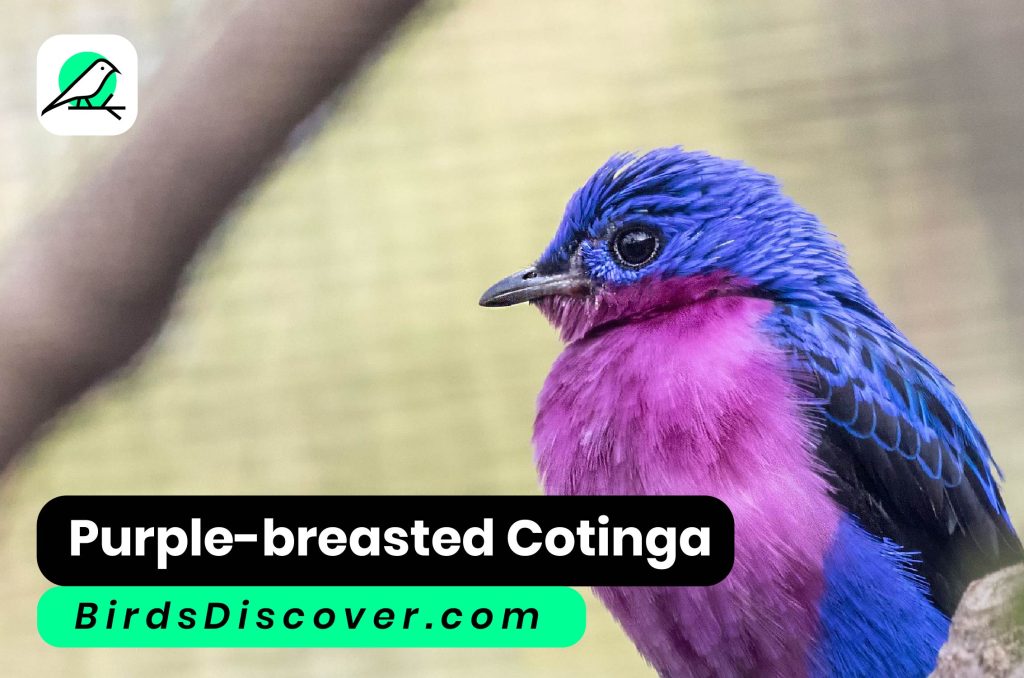
Purple-breasted Cotinga Biography
| Attribute | Details |
|---|---|
| Common Name | Purple-breasted Cotinga |
| Scientific Name | Cotinga cotinga |
| Family | Cotingidae |
| Order | Passeriformes |
| Range | Northern South America, including parts of Colombia and Venezuela |
| Habitat | Lowland and foothill rainforests |
| Size | Approximately 23 cm (9 inches) in length |
| Plumage Description | Males: Iridescent purple chest, green head, black back; Females: Less vibrant, more muted colors |
| Diet | Primarily fruits |
| Behavior | Forages in the canopy, often solitary or in small groups |
| Call | Melodious, low-pitched notes |
| Conservation Status | Least Concern (but faces habitat loss due to deforestation) |
| Notable Characteristics | Striking coloration, distinctive plumage |
Shiny Cowbird
The Shiny Cowbird (Molothrus bonariensis) is a striking passerine native to South America, recognized for its iridescent black plumage that shimmers with green and purple hues under sunlight. Found predominantly in Argentina, Uruguay, and southern Brazil, this bird thrives in open and semi-open habitats, including grasslands, pastures, and cultivated areas. Males are particularly notable for their glossy feathers, while females and juveniles exhibit a more subdued, brownish color. Shiny Cowbirds are brood parasites, meaning they lay their eggs in the nests of other bird species, leaving the host birds to raise their young. This behavior significantly impacts the reproductive success of their host species. Their diet primarily consists of insects, seeds, and fruits, making them adaptable to varying food sources. Despite their parasitic nesting habits, Shiny Cowbirds are resilient and adaptable, contributing to their stable population across their range.

Shiny Cowbird Biography, Sound
| Attribute | Details |
|---|---|
| Common Name | Shiny Cowbird |
| Scientific Name | Molothrus bonariensis |
| Family | Icteridae |
| Order | Passeriformes |
| Range | Argentina, Uruguay, southern Brazil, and parts of Paraguay |
| Habitat | Open and semi-open areas, including grasslands, pastures, and cultivated lands |
| Size | Approximately 23 cm (9 inches) in length |
| Plumage Description | Males: Iridescent black with green and purple sheen; Females and juveniles: Brownish, less shiny |
| Diet | Insects, seeds, and fruits |
| Behavior | Brood parasite, laying eggs in the nests of other bird species |
| Call | Harsh, metallic “click” or “chack” sounds |
| Conservation Status | Least Concern (generally stable population) |
| Notable Characteristics | Glossy, iridescent feathers in males, brood parasitism |
Hildebrandt’s Starling
Hildebrandt’s Starling (Lamprotornis hildebrandti) is a captivating bird native to East Africa, particularly in the regions of Kenya and Tanzania. Known for its striking appearance, this starling features vibrant plumage with a metallic sheen of deep blues, greens, and purples, making it a dazzling sight in its natural habitat. Males are especially notable for their iridescent coloration and eye-catching patterns. These starlings inhabit open woodlands, savannas, and forest edges, where they forage for insects, fruits, and seeds. They are highly social birds, often found in noisy, active flocks that engage in complex vocalizations and behaviors. Hildebrandt’s Starling builds its nests in tree cavities or on branches, and its nesting colonies can be quite noisy and bustling. Despite its beauty and social nature, the species faces threats from habitat loss, though it currently maintains a stable population in its range.
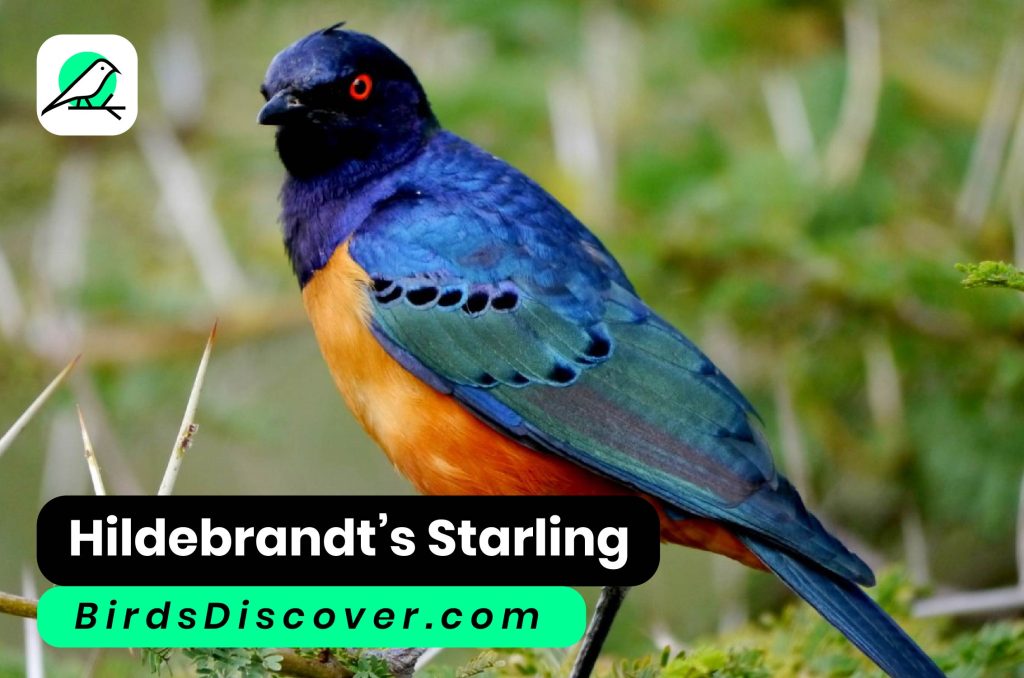
Hildebrandt’s Starling Biography, Sound
| Attribute | Details |
|---|---|
| Common Name | Hildebrandt’s Starling |
| Scientific Name | Lamprotornis hildebrandti |
| Family | Sturnidae |
| Order | Passeriformes |
| Range | East Africa, including Kenya and Tanzania |
| Habitat | Open woodlands, savannas, forest edges |
| Size | Approximately 28 cm (11 inches) in length |
| Plumage Description | Males: Iridescent blue, green, and purple feathers; Females: More muted colors, less iridescent |
| Diet | Insects, fruits, seeds |
| Behavior | Highly social, often seen in noisy flocks; builds nests in tree cavities or branches |
| Call | Variety of harsh and melodious vocalizations |
| Conservation Status | Least Concern (generally stable population) |
| Notable Characteristics | Vibrant, iridescent plumage in males, social flock behavior |
Purple-Crowned Fairy Wren
The Purple-crowned Fairy-wren (Malurus coronatus) is a striking small passerine bird found in the arid and semi-arid regions of central Australia. Renowned for its vibrant and distinctive plumage, the male features a brilliant combination of purple and blue on its crown and back, contrasting sharply with a black face and bright red underparts. This dazzling coloration makes it a standout species in its typically dry, sparse habitat, which includes spinifex grasslands and open woodlands. The female and juveniles, while less vivid, possess a more subdued brown and grey palette. The Purple-crowned Fairy-wren primarily feeds on insects and other small invertebrates, which it forages for on the ground and in low vegetation. It is known for its social behavior, often found in small, tight-knit family groups. Despite its reliance on specific habitats, the species is currently not threatened, maintaining a stable population in its range.
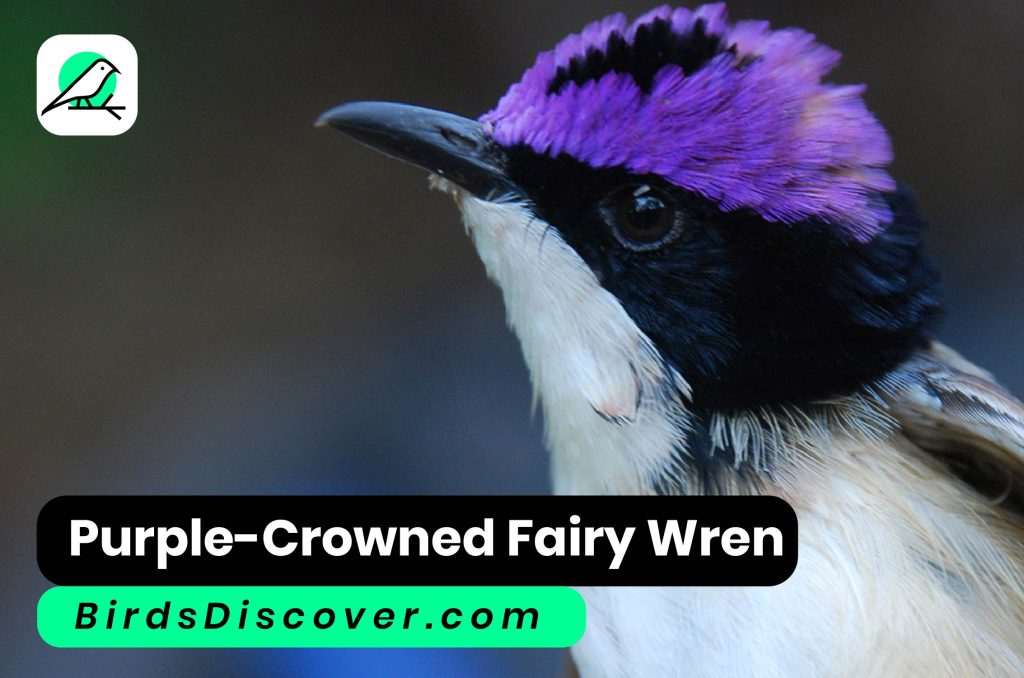
Purple-Crowned Fairy Wren Biography, Sound
| Attribute | Details |
|---|---|
| Common Name | Purple-crowned Fairy-wren |
| Scientific Name | Malurus coronatus |
| Family | Maluridae |
| Order | Passeriformes |
| Range | Central Australia, including arid and semi-arid regions |
| Habitat | Spinifex grasslands, open woodlands |
| Size | Approximately 14 cm (5.5 inches) in length |
| Plumage Description | Males: Brilliant purple crown and back, black face, red underparts; Females and juveniles: Subdued brown and grey |
| Diet | Insects and other small invertebrates |
| Behavior | Social, often found in small family groups; forages on the ground and in low vegetation |
| Call | Various melodic and sharp notes |
| Conservation Status | Least Concern (stable population) |
| Notable Characteristics | Vibrant coloration in males, specific habitat preferences |
Rufous-Vented Ground Cuckoo
The Rufous-vented Ground Cuckoo (Neomorphus geoffroyi) is a remarkable bird native to the lowland forests of Central America, particularly in countries like Costa Rica and Panama. This elusive species is known for its distinctive appearance and behavior. Characterized by its striking plumage, the Rufous-vented Ground Cuckoo displays a combination of dark brown and rufous colors, with a notable rufous belly that adds to its visual appeal. It is a ground-dweller, preferring dense undergrowth and forest floors where it forages for insects, small invertebrates, and fruits. Its shy and secretive nature makes it challenging to observe, as it often remains hidden within its habitat. The species is also recognized for its loud, resonant calls that echo through the forest. Despite its cryptic lifestyle, the Rufous-vented Ground Cuckoo faces ongoing threats from habitat destruction, though it is currently classified as Least Concern due to its relatively stable population.
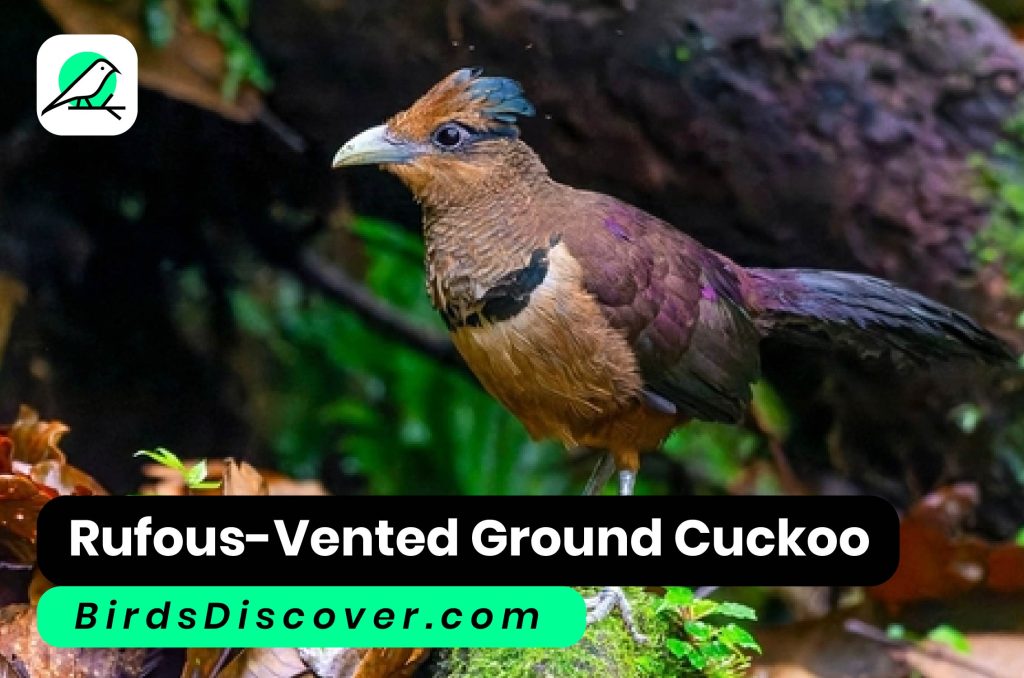
Rufous-Vented Ground Cuckoo Biography
| Attribute | Details |
|---|---|
| Common Name | Rufous-vented Ground Cuckoo |
| Scientific Name | Neomorphus geoffroyi |
| Family | Cuculidae |
| Order | Cuculiformes |
| Range | Lowland forests of Central America, including Costa Rica and Panama |
| Habitat | Dense undergrowth and forest floors |
| Size | Approximately 40 cm (16 inches) in length |
| Plumage Description | Dark brown body with a rufous belly; distinctive rufous underparts |
| Diet | Insects, small invertebrates, and fruits |
| Behavior | Ground-dweller, elusive and secretive; forages primarily on the forest floor |
| Call | Loud, resonant calls |
| Conservation Status | Least Concern (stable population, though habitat loss is a threat) |
| Notable Characteristics | Elusive behavior, distinctive rufous belly, preference for dense forest |
Purple Cochoa
The Purple Cochoa (Cochoa purpurea) is a striking and elusive bird native to the high-altitude forests of the Himalayas, specifically in regions of Nepal, Bhutan, and northern India. This captivating species is renowned for its vibrant plumage, which showcases an exquisite array of purples and blues, complemented by a striking greenish-yellow belly. Males are particularly noted for their deep, rich colors, which make them a visual highlight in their montane forest habitat. The Purple Cochoa primarily inhabits dense, mossy forests and feeds on insects and other small invertebrates found in the undergrowth. It is known for its secretive nature and is rarely seen, as it often remains hidden among the dense foliage. Despite its elusive behavior, the species faces ongoing threats from habitat destruction and climate change. Nevertheless, it is currently classified as Least Concern due to its relatively stable population in suitable habitats.
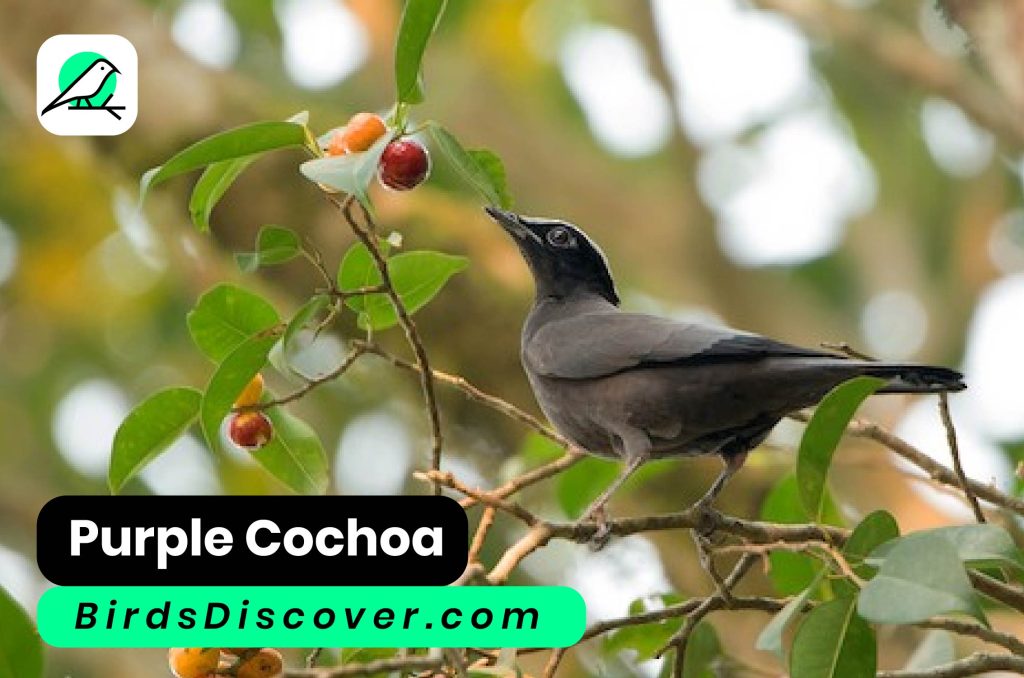
Purple Cochoa Biography, Sound
| Attribute | Details |
|---|---|
| Common Name | Purple Cochoa |
| Scientific Name | Cochoa purpurea |
| Family | Turdidae |
| Order | Passeriformes |
| Range | High-altitude forests in the Himalayas, including Nepal, Bhutan, and northern India |
| Habitat | Dense, mossy montane forests |
| Size | Approximately 21 cm (8.3 inches) in length |
| Plumage Description | Males: Deep purple and blue feathers with a greenish-yellow belly; Females: More subdued colors |
| Diet | Insects and other small invertebrates |
| Behavior | Elusive and secretive, often hidden in dense foliage |
| Call | Varied, melodious songs |
| Conservation Status | Least Concern (stable population but threatened by habitat loss) |
| Notable Characteristics | Vibrant plumage, high-altitude forest habitat, elusive nature |
Common Scimitarbill
The Common Scimitarbill (Rhinorbynx scimitarus) is a distinctive bird native to the woodlands and savannas of eastern and southern Africa. Named for its striking, curved bill that resembles a scimitar, this bird is easily recognized by its unique beak, which is adapted for extracting insects and other invertebrates from bark and crevices. The Common Scimitarbill has a striking appearance with its contrasting black and white plumage, accented by bright red legs and a distinctive white tail. It is a social bird often seen in pairs or small groups, actively foraging among the foliage and tree branches. The species is known for its characteristic calls and vocalizations, which add to its presence in its natural habitat. Although it faces some threats from habitat loss, the Common Scimitarbill is generally adaptable and maintains a stable population across its range.

Common Scimitarbill Biography, Sound
| Attribute | Details |
|---|---|
| Common Name | Common Scimitarbill |
| Scientific Name | Rhinorbynx scimitarus |
| Family | Bucerotidae |
| Order | Bucerotiformes |
| Range | Eastern and southern Africa, including countries like Kenya, Tanzania, and South Africa |
| Habitat | Woodlands, savannas, and open forests |
| Size | Approximately 36 cm (14 inches) in length |
| Plumage Description | Black and white plumage with bright red legs; distinctive curved bill |
| Diet | Insects and other small invertebrates |
| Behavior | Social, often seen in pairs or small groups; forages by probing tree bark |
| Call | Varied, melodious calls and vocalizations |
| Conservation Status | Least Concern (generally stable population) |
| Notable Characteristics | Curved bill adapted for foraging, striking plumage, social behavior |
Cape Glossy Starling
The Cape Glossy Starling (Lamprotornis nitens) is a vibrant and captivating bird native to the southwestern regions of Africa, including South Africa and Namibia. Renowned for its iridescent plumage, this starling exhibits a stunning mix of metallic blues and greens, which shimmer vividly in sunlight. Adults have a striking appearance with a deep, glossy greenish-blue body and contrasting dark eyes. The Cape Glossy Starling typically inhabits a variety of environments, from open woodlands and savannas to urban parks and gardens. Its diet mainly consists of insects, fruits, and small invertebrates, which it forages for both on the ground and in trees. Social and often found in flocks, this species is known for its lively and melodious calls. While the Cape Glossy Starling is generally adaptable and has a stable population, it still faces challenges from habitat alteration and urban expansion.
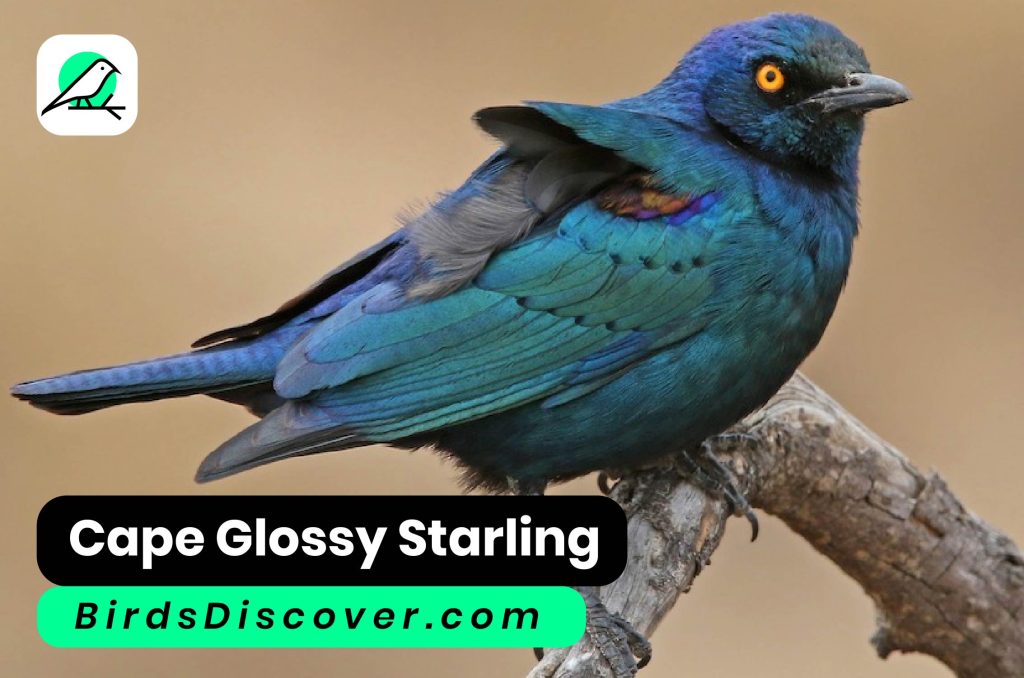
Cape Glossy Starling Biography, Sound
| Attribute | Details |
|---|---|
| Common Name | Cape Glossy Starling |
| Scientific Name | Lamprotornis nitens |
| Family | Sturnidae |
| Order | Passeriformes |
| Range | Southwestern Africa, including South Africa and Namibia |
| Habitat | Open woodlands, savannas, urban parks, and gardens |
| Size | Approximately 23 cm (9 inches) in length |
| Plumage Description | Iridescent metallic blues and greens; deep glossy greenish-blue body |
| Diet | Insects, fruits, and small invertebrates |
| Behavior | Social, often found in flocks; forages on the ground and in trees |
| Call | Lively and melodious calls |
| Conservation Status | Least Concern (stable population) |
| Notable Characteristics | Vibrant iridescent plumage, adaptable to various environments |
Tricolored Heron
The Tricolored Heron (Egretta tricolor) is a striking wader native to the coastal and inland wetlands of the southeastern United States, Central America, and northern South America. This elegant bird is known for its distinctive plumage, which features a combination of deep blue-gray body feathers, a chestnut-colored neck, and a contrasting white belly. The Tricolored Heron is particularly notable during breeding season when it displays elaborate plumage and vibrant hues, including a beautiful violet-blue coloration on its back. It frequents a variety of wetland habitats, including mangroves, estuaries, and marshes, where it feeds on fish, amphibians, and small invertebrates. The heron employs a stealthy hunting technique, slowly stalking through shallow waters to catch prey with its sharp, pointed beak. Although it faces threats from habitat loss and pollution, the Tricolored Heron maintains a stable population and is considered of Least Concern.

Tricolored Heron Biography
| Attribute | Details |
|---|---|
| Common Name | Tricolored Heron |
| Scientific Name | Egretta tricolor |
| Family | Ardeidae |
| Order | Pelecaniformes |
| Range | Southeastern United States, Central America, northern South America |
| Habitat | Coastal and inland wetlands, including mangroves, estuaries, and marshes |
| Size | Approximately 61 cm (24 inches) in length |
| Plumage Description | Deep blue-gray body, chestnut-colored neck, white belly; vibrant hues during breeding season |
| Diet | Fish, amphibians, and small invertebrates |
| Behavior | Stealthy hunter; stalks through shallow waters to catch prey with its sharp beak |
| Call | Harsh, croaking calls |
| Conservation Status | Least Concern (generally stable population) |
| Notable Characteristics | Elegant plumage, distinctive coloration, stealthy hunting technique |
Purple Gallinule
The Purple Gallinule (Porphyrio martinicus) is a vividly colored bird native to the wetlands and marshes of the southeastern United States, Central America, and the Caribbean. Renowned for its striking plumage, this rail species features a brilliant mix of purple, teal, and green feathers, complemented by a bright red bill and yellow legs. Its vibrant colors make it a standout in its typically lush and swampy habitat. The Purple Gallinule is an adept swimmer and climber, often seen navigating floating vegetation or wading through shallow water in search of food. Its diet consists mainly of aquatic plants, seeds, insects, and small invertebrates. Known for its distinctive, high-pitched calls, the Purple Gallinule is a secretive bird that can be challenging to spot due to its preference for dense vegetation. Despite facing threats from habitat loss and pollution, it is currently classified as Least Concern due to its wide distribution and adaptable nature
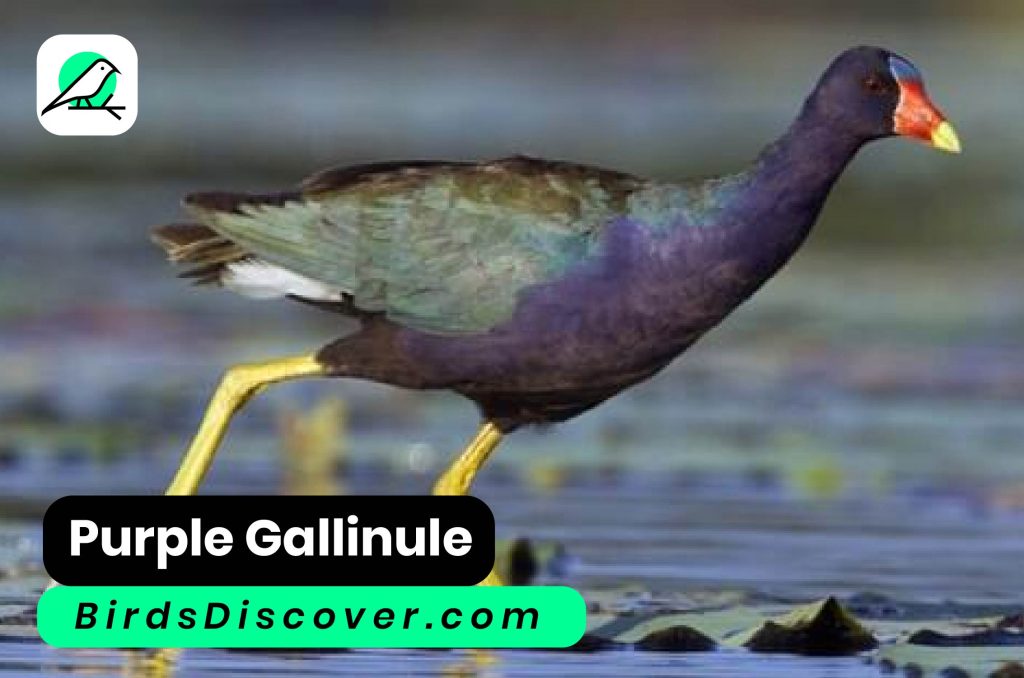
Purple Gallinule Biography, Sound
| Attribute | Details |
|---|---|
| Common Name | Purple Gallinule |
| Scientific Name | Porphyrio martinicus |
| Family | Rallidae |
| Order | Gruiformes |
| Range | Southeastern United States, Central America, Caribbean |
| Habitat | Wetlands, marshes, swamps, and aquatic vegetation |
| Size | Approximately 35 cm (14 inches) in length |
| Plumage Description | Vibrant purple body with teal and green feathers, red bill, and yellow legs |
| Diet | Aquatic plants, seeds, insects, and small invertebrates |
| Behavior | Swims and climbs well; forages in shallow water and dense vegetation |
| Call | High-pitched, varied calls |
| Conservation Status | Least Concern (generally stable population) |
| Notable Characteristics | Bright coloration, adaptability to various wetland environments |
Splendid Sunbird
The Splendid Sunbird (Cinnyris coccinigastrus) is a dazzling bird native to the forests and woodlands of East Africa, including Kenya, Tanzania, and Uganda. Renowned for its striking plumage, the male Splendid Sunbird showcases a vibrant palette of iridescent colors, including metallic green, blue, and purple, along with a bright red belly. This spectacular coloration is complemented by a slender, curved bill, which is perfectly adapted for extracting nectar from flowers. The Splendid Sunbird is a frequent visitor to flowering plants and shrubs, where it plays a crucial role in pollination. Its diet also includes small insects and spiders. Often seen flitting among the foliage, the sunbird is a lively and agile bird, known for its energetic movements and melodious songs. Although it faces some habitat loss, the species is generally adaptable and maintains a stable population in its natural range.
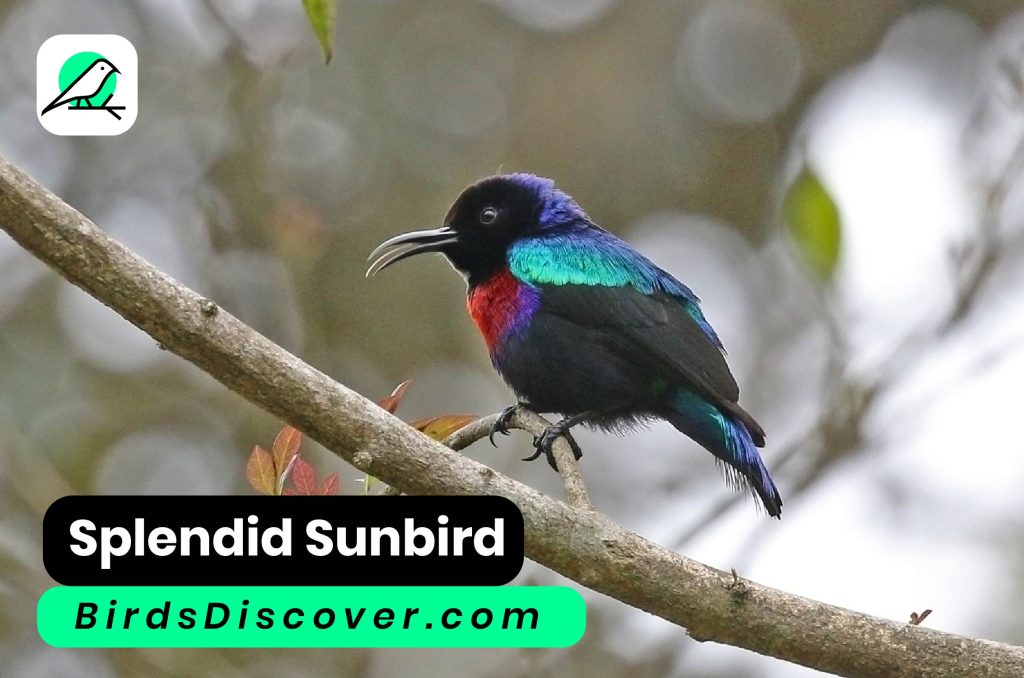
Splendid Sunbird Biography, Sound
| Attribute | Details |
|---|---|
| Common Name | Splendid Sunbird |
| Scientific Name | Cinnyris coccinigastrus |
| Family | Nectariniidae |
| Order | Passeriformes |
| Range | East Africa, including Kenya, Tanzania, and Uganda |
| Habitat | Forests, woodlands, and flowering shrubs |
| Size | Approximately 11 cm (4.3 inches) in length |
| Plumage Description | Males: Iridescent green, blue, purple, and bright red belly; Females: More subdued, less colorful |
| Diet | Nectar from flowers, small insects, and spiders |
| Behavior | Forages for nectar and insects; energetic and agile |
| Call | Melodious, high-pitched songs |
| Conservation Status | Least Concern (generally stable population) |
| Notable Characteristics | Vibrant iridescent plumage, role in pollination |
Violaceous jay
The Violaceous Jay (Cyanocorax violaceus) is a striking bird native to the lowland forests of Central America, particularly found in countries such as Costa Rica and Panama. Known for its vivid and alluring plumage, the Violaceous Jay displays a rich palette of deep purples and blues, with a distinctive black mask around its eyes that accentuates its vibrant colors. This medium-sized jay thrives in a variety of forested habitats, including rainforests and semi-deciduous forests, where it forages for a diet primarily consisting of fruits, insects, and small vertebrates. The species is social and often seen in noisy, active groups, engaging in various vocalizations and complex social behaviors. The Violaceous Jay plays a significant ecological role by dispersing seeds through its feeding habits. Despite some local threats from habitat destruction, it is currently classified as Least Concern due to its widespread distribution and adaptable nature.
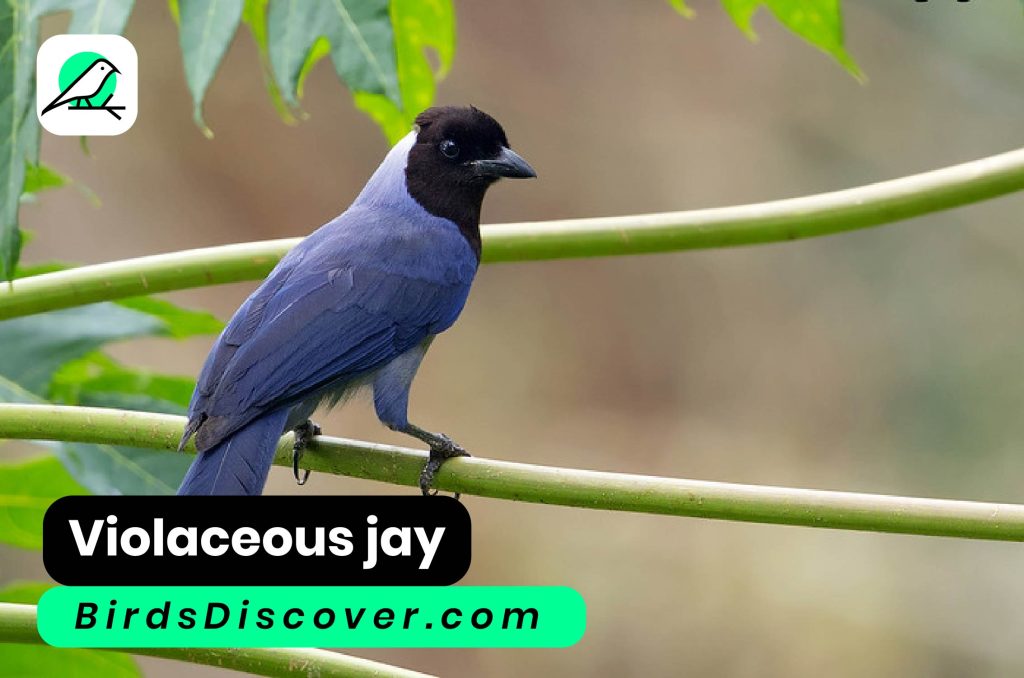
Violaceous jay Biography, Sound
| Attribute | Details |
|---|---|
| Common Name | Violaceous Jay |
| Scientific Name | Cyanocorax violaceus |
| Family | Corvidae |
| Order | Passeriformes |
| Range | Lowland forests of Central America, including Costa Rica and Panama |
| Habitat | Rainforests, semi-deciduous forests |
| Size | Approximately 30 cm (12 inches) in length |
| Plumage Description | Deep purples and blues with a distinctive black mask around the eyes |
| Diet | Fruits, insects, small vertebrates |
| Behavior | Social, often seen in noisy groups; engages in various vocalizations |
| Call | Varied and complex vocalizations |
| Conservation Status | Least Concern (stable population but faces local habitat threats) |
| Notable Characteristics | Vibrant coloration, role in seed dispersal |
Grey-headed Swamphen
The Grey-headed Swamphen (Porphyrio poliocephalus) is a striking bird found in the wetlands of South and Southeast Asia, including India, Sri Lanka, Thailand, and Malaysia. Distinguished by its vivid plumage, the swamphen boasts a rich blue body with a contrasting grey head and bright red bill and legs. This large, robust bird is well-adapted to its marshy habitat, where it thrives in reed beds, swamps, and shallow water bodies. The Grey-headed Swamphen feeds on a varied diet that includes aquatic plants, seeds, insects, and small invertebrates. Its strong legs and large, splayed feet are ideal for navigating the dense vegetation of its wetland home. The species is known for its loud, repetitive calls and conspicuous behavior. While it faces some local threats from habitat destruction and water pollution, the Grey-headed Swamphen is generally considered to have a stable population and is classified as Least Concern.
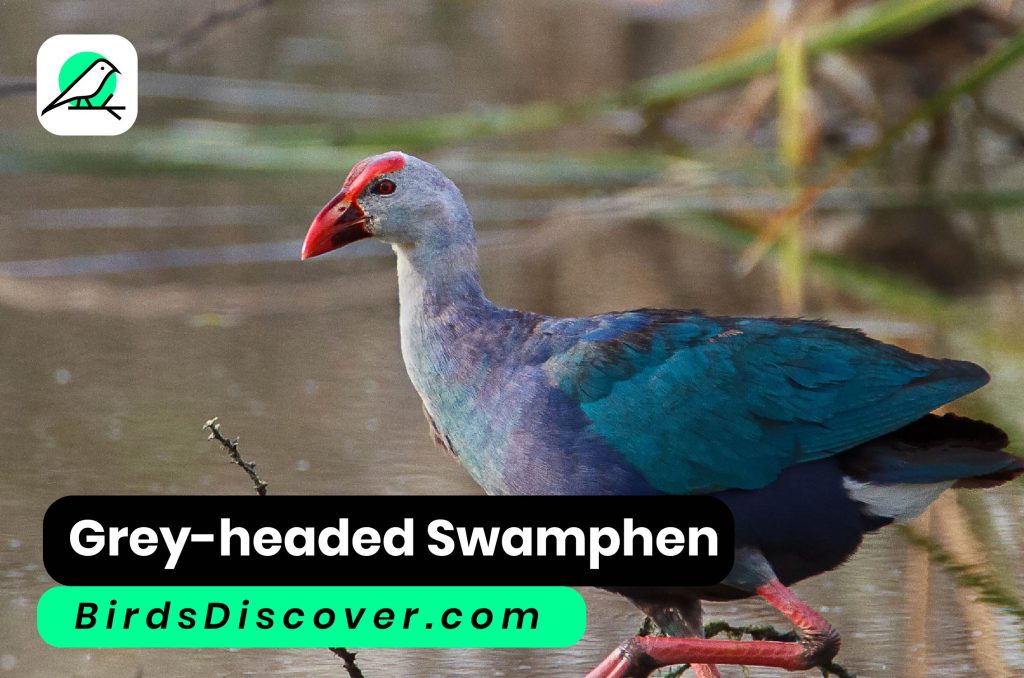
Grey-headed Swamphen Biography, Sound
| Attribute | Details |
|---|---|
| Common Name | Grey-headed Swamphen |
| Scientific Name | Porphyrio poliocephalus |
| Family | Rallidae |
| Order | Gruiformes |
| Range | South and Southeast Asia, including India, Sri Lanka, Thailand, and Malaysia |
| Habitat | Reed beds, swamps, shallow water bodies |
| Size | Approximately 40 cm (16 inches) in length |
| Plumage Description | Rich blue body with a grey head, red bill, and red legs |
| Diet | Aquatic plants, seeds, insects, small invertebrates |
| Behavior | Navigates dense vegetation; known for loud, repetitive calls |
| Call | Repetitive, loud calls |
| Conservation Status | Least Concern (generally stable population) |
| Notable Characteristics | Adapted to wetland environments, distinctive coloration |
Purple-throated Mountain-gem
The Purple-throated Mountain-gem (Lampornis calolaemus) is a dazzling hummingbird native to the high-altitude forests of Central America, particularly found in Costa Rica and western Panama. Known for its vibrant and striking plumage, the male of this species is especially notable for its deep purple throat, which contrasts beautifully with its green body and white underparts. The Purple-throated Mountain-gem inhabits cloud forests and mountainous regions, where it frequents flowering plants and feeders to sustain its diet of nectar and small insects. This hummingbird is highly territorial, often seen aggressively defending its feeding areas from other birds. Its rapid wing beats and hovering flight are characteristic of hummingbirds, allowing it to feed while suspended in mid-air. Despite facing some threats from habitat loss and climate change, the Purple-throated Mountain-gem is currently classified as Least Concern due to its relatively stable population and adaptable nature.

Purple-throated Mountain-gem Biography
| Attribute | Details |
|---|---|
| Common Name | Purple-throated Mountain-gem |
| Scientific Name | Lampornis calolaemus |
| Family | Trochilidae |
| Order | Apodiformes |
| Range | High-altitude forests of Costa Rica and western Panama |
| Habitat | Cloud forests and mountainous regions |
| Size | Approximately 10 cm (4 inches) in length |
| Plumage Description | Males: Deep purple throat with a green body and white underparts; Females: Less colorful, more subdued |
| Diet | Nectar from flowers, small insects |
| Behavior | Territorial, aggressively defends feeding areas |
| Call | Varied, high-pitched vocalizations |
| Conservation Status | Least Concern (generally stable population) |
| Notable Characteristics | Vibrant plumage, hovering flight, high-altitude habitat |
Conclusion
Purple birds, with their captivating colors and intriguing behaviors, offer a glimpse into the rich diversity of the avian world. From their stunning plumage and ecological roles to their conservation needs and cultural significance, these birds play a vital role in their ecosystems and human imagination alike. As we continue to explore and learn about purple birds, it is essential to support conservation efforts that ensure their survival and maintain the health of the environments they inhabit. The preservation of these vibrant creatures not only enriches our natural world but also serves as a reminder of the beauty and complexity that nature has to offer.
FAQS
What are some examples of purple birds?
Answer: Some notable examples of purple birds include the Purple Martin (Progne subis), known for its striking deep purple plumage; the Violet-crowned Hummingbird (Amazilia violiceps), which features a vivid violet crown and throat; and the Purple Swamphen (Porphyrio porphyrio), which has rich purple and blue feathers. Each of these species exhibits unique shades of purple and plays a different role in their respective ecosystems.
Why are purple birds so rare?
Answer: Purple birds are relatively rare due to the specific and often limited range of pigmentation and structural coloration that produces their vivid hues. The coloration in purple birds is often a result of unique combinations of pigments and structural features in their feathers, which are not commonly found across all bird species. Additionally, some purple birds face habitat loss and other environmental pressures that can further contribute to their rarity.
What do purple birds eat?
Answer: The diet of purple birds varies depending on the species. For example, the Purple Martin primarily feeds on insects, which it catches mid-flight. The Violet-crowned Hummingbird feeds on nectar from flowers, playing a crucial role in pollination. The diet of each purple bird is adapted to its ecological niche and contributes to its survival and the health of its habitat.
How can I attract purple birds to my backyard?
Answer: Attracting purple birds to your backyard involves creating a suitable environment that meets their needs. For species like the Purple Martin, providing nest boxes can encourage them to breed in your area. Planting nectar-rich flowers and providing feeders can attract hummingbirds such as the Violet-crowned Hummingbird. Ensuring a bird-friendly habitat with native plants and minimal disturbance will increase your chances of attracting these vibrant visitors.
Are purple birds endangered?
Answer: The conservation status of purple birds varies by species. While some, like the Purple Martin, have stable populations due to successful conservation efforts, others may face threats from habitat loss, climate change, and other environmental pressures. It’s essential to check the conservation status of specific purple bird species through resources like the International Union for Conservation of Nature (IUCN) Red List or local wildlife organizations to understand their current risks and conservation needs.

